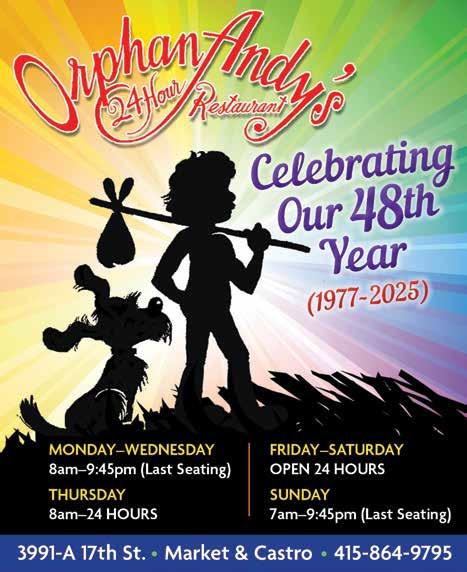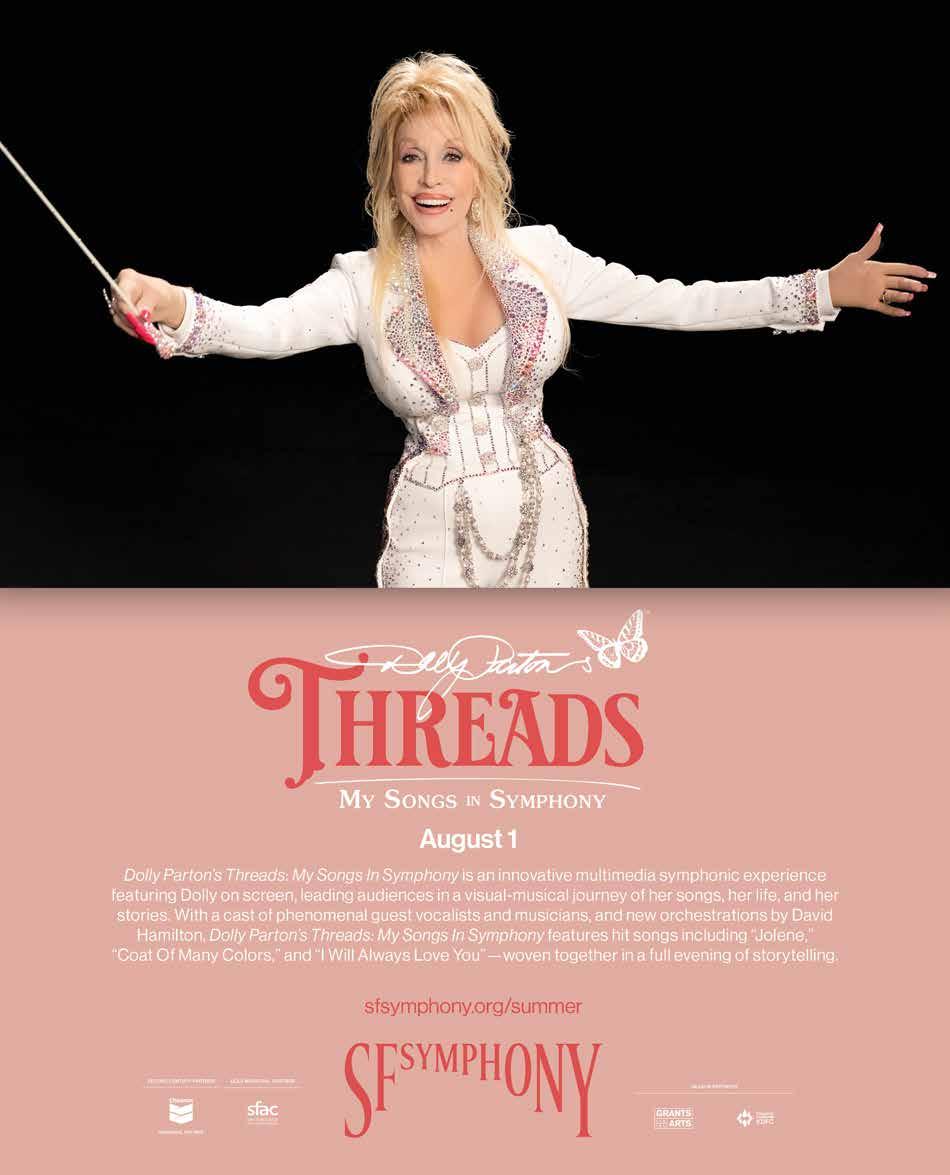
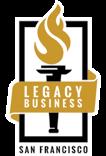
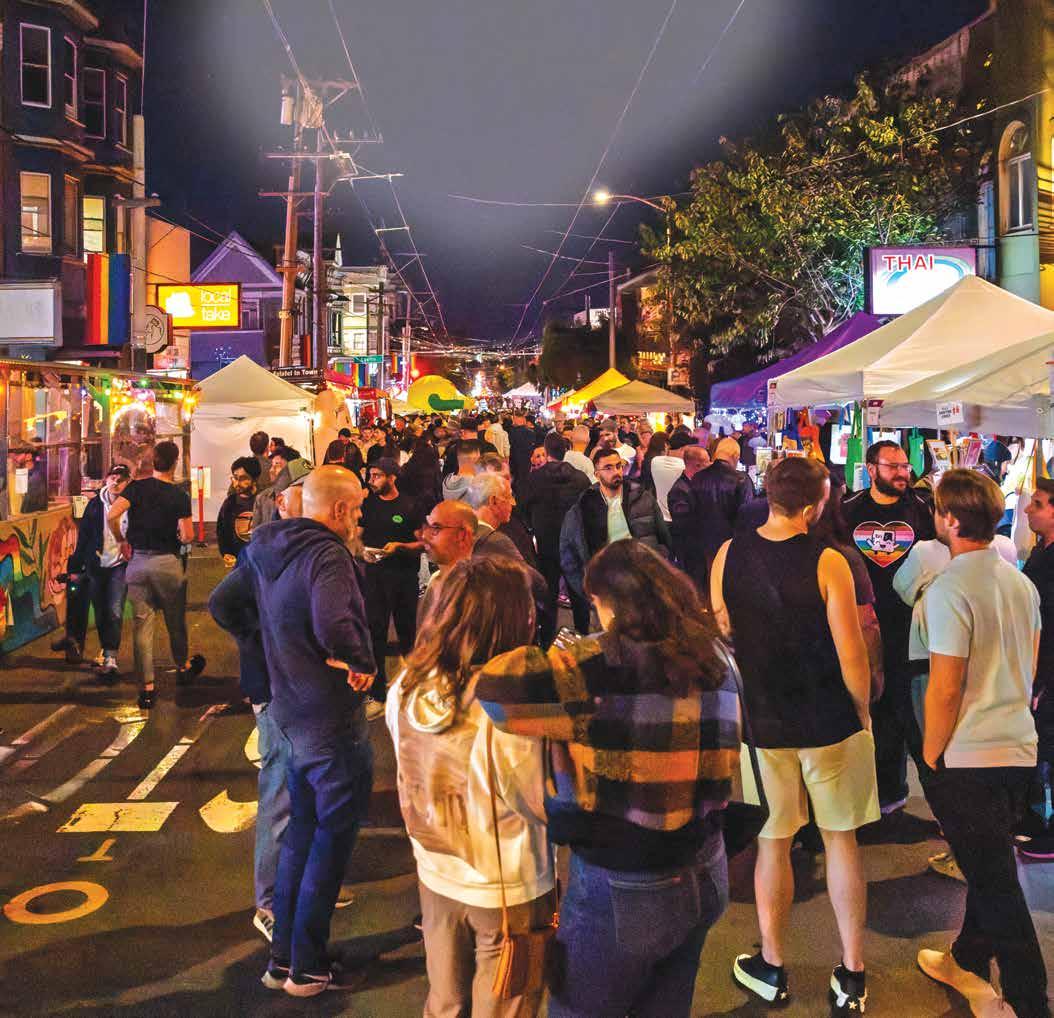






D’Arcy Drollinger, the Owner and Artistic Director of Oasis Nightclub, on July 19 announced that the popular club will be closing on January 1, 2026, after more than a decade of community-driven entertainment. The venue has been a cultural hub for drag, cabaret, live theater, and queer expression. With rising operational costs and declining post-pandemic attendance, however, Oasis has operated at a financial loss for some time. Drollinger and the club’s leadership, as a result, made the difficult decision to close the brickand-mortar location.
“Life is about transformation,” said Drollinger. “We transformed a historic building into a safe, joyful, and groundbreaking space for queer art and nightlife. Now, it’s time to transform again. This has been the hardest decision I’ve ever had to make, but also one filled with hope for what comes next.”
producers, Oasis Arts will carry the legacy forward. With a renewed focus on presenting works in other venues across the Bay Area, Oasis will continue to celebrate and elevate queer artistry without the limitations of a single location.
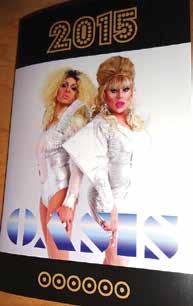
“The hardest part of all of this is losing a physical space that means so much to so many people,” said Snaxx, Director of Programs and Staff. “From our staff, to our performers, casts, crews, and patrons, Oasis has created a culture unlike any other venue. This is all very painful and sad, but I can’t help but smile through the tears for getting to be a part of something so important, so transformative, so ‘only-in-San Francisco.’ And it couldn’t have existed without every person who’s come through our doors to tip, to take the stage, to hug, to sing, to be in community.”
Oasis has been home to some of San Francisco’s most irreverent shows, parties, and events, such as Princess, Sex and the City Live, Baloney, and numerous others. San Francisco Bay Times columnist David Landis, aka The Gay Gourmet, was among those who enjoyed and relied upon the unforgettable pandemic-era delivery service Meals on Heels during the pandemic time that also included Oasis TV and Hot Trash. Oasis has hosted drag royalty, nurtured emerging talent, and become a touchstone for LGBTQ+ storytelling in the Bay Area and beyond. Oasis has employed hundreds of artists, producers, and staff, without whom Oasis could never have existed.
“We have always said that Oasis is more than a nightclub—it’s a movement,” added Drollinger. “And movements don’t need four walls to keep going. Oasis Arts, our nonprofit, is where the heart of our mission will live as we move forward in 2026.”
Oasis Arts
Established to support queer performers and
“By closing the doors of the club, we’re opening up a world of new possibilities,” Drollinger said.
“We’re pivoting like we always have—boldly, creatively, and with community at our core. Necessity is the mother of invention, and we’re already imagining what’s next.”
of AsiaSF and Oakland’s Port Bar
Another groundbreaking LGBTQ+ venue that had developed a large community and following, AsiaSF, closed on April 28, 2024, citing similar concerns: the changing nighttime environment post COVID and financial challenges. Open for over 24 years, the former SoMa restaurant, bar, and cabaret, was famous for its dinner shows featuring transgender performers. The Ladies of AsiaSF were even featured in the 2015 reality documentary series Transcendent
Larry Hashbarger, Lord Martine, and others on the AsiaSF team, as for Oasis later, said, “While our brick-and-mortar location may be closed, our journey continues.” They too have been exploring pop-ups and related projects that retain the spirit of AsiaSF without the fixed location.
While some have pointed to a “doom loop” in San Francisco, the problems in recent years have been impacting LGBTQ+ venues throughout the Bay Area. Yet another landmark spot with a large following, The Port Bar, closed on February 25, 2024. A lively destination that was open every day of the week, The Port Bar hosted drag shows that spilled out into the street in front of the icon-
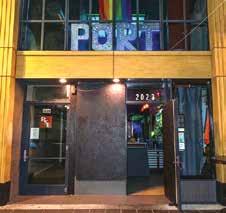
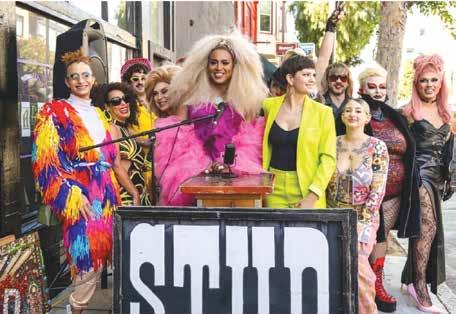
ic Art Deco Paramount Theatre and became a gathering place for the East Bay’s transgender community.
In addition to the previously mentioned challenges, The Port Bar owners Richard Fuentes and Sean Sullivan faced mounting problems with their landlord, Phil Leong. He alleged that the establishment was not adhering to the lease in terms of the entertainment they were featuring.
Saved From the Brink
Given the overwhelming number of challenges that venues continue to face, many are making significant changes to stay open. One of San Francisco’s oldest queer bars and the only existing bar of its kind on Polk Street, The Cinch Saloon, was saved from the brink just before Pride this year by a new owner, Scott Taylor. Open since 1974, the bar was once the epicenter of the entire city’s LGBTQ+ community and particularly for men. This was before many gravitated to the Castro, such that the first Gay Freedom Day Parade in San Francisco marched down Polk Street with participants heading into The Cinch.
Mary’s. This also involved a change of ownership, with four new individuals taking the helm. One, Aindréas O’Donnell, was instrumental in the name change, as Mary was his mother’s first name.
Perhaps the most dramatic saved-from-thebrink example is The Stud, where the late great Heklina started the legendary Trannyshack and other popular series took place. After being open since 1966, The Stud shuttered its doors in May 2020 due to financial troubles stemming from the shutdown forced by the COVID pandemic. An extensive series of meetings, fundraisers, and other efforts then took place, leading to the formation of The Stud Collective that includes San Francisco Bay Times columnist and Director of the San Francisco Office of Transgender Initiatives, Honey Mahogany.
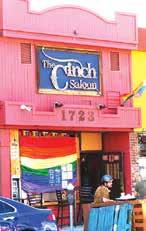
The Collective took ownership of The Stud on December 30, 2016, making it, according to member Nate Albee, “the very first co-op nightclub in the United States.” The Stud reopened on April 20, 2024, at 1123 Folsom Street.
New Venues and Events
As Juanita MORE! said, “The Cinch is where I felt comfortable and began making many new friends (sometimes at the urinal). Years later, as Empress of the Imperial Council of San Francisco, I attended many events with my crown on my head. It is one of the very few queer bars left in my neighborhood. I am so proud of Scott Taylor for standing up and securing the bar’s future.”
A shift happening right now is the transformation of Trax at 1437 Haight Street to
In the midst of the closures and resurrections, there have been some prominent new openings. Bar 49 at 2295 Market Street has brought back to life the former location of Bagdad Cafe. (Remarkably, after Bagdad’s closure, at least five other businesses tried to succeed in that space: Criolla Kitchen, Sliderbar, Ovok, Castro Republic, and Los Amigos Diner.) Hi Tops co-manager Colm
(continued on page 4)
By Donna Sachet
When lost in an unforgiving desert, one’s only hope is the appearance of an oasis, a welcoming harbor of refreshing water, cool shade, and protection from the punishing elements. It seems that San Francisco is about to lose that oasis and all it has come to represent in the city. Yes, the popular club on 11th Street, Oasis, has announced it will close at the first of the year. Some have wondered if this is a clever ploy to secure new financial partners or to garner some large unrestricted gift, perhaps from Silicon Valley, to shore up the club and ensure its survival, but the explanation from D’Arcy Drollinger is painfully frank: shrinking audiences and declining bar sales combined with climbing costs spelled the end for Oasis. Let’s address each of these trends. COVID was the death knell for many extracurricular activities. Audiences either shrank or disappeared entirely as we all sheltered in place or created small pods of safety, largely confined to personal living spaces. And we have been slow to emerge from that isolation. If even movie theaters are continuing to see smaller audiences with more complaints about ticket prices and reduced amenities, just imagine what live theaters are facing. Would reduced prices entice a new or returning audience? That answer is unknown, but as insurance, security, promotion, and other expenses continue to climb, reducing the admission price is unfeasible. And, in the case of Oasis, we have heard of D’Arcy’s firm commitment to pay performers a decent wage, creating another impediment to reducing the price of admission. But good for her! In an era when RuPaul’s Drag Race personalities crisscross the country, earning thousands of dollars for each appearance, shouldn’t our own local talents be properly compensated? Let’s face it. Certain fixed expenses come with any public venture and discounts at the door put inordinate pressure on that venture.
Although we can put much of the blame on COVID and its aftermath, the world has also changed in other significant ways. Many people live on social media. They find entertainment, diversion, and even partners on the internet without leaving their home and without extra expenses. Want to watch a
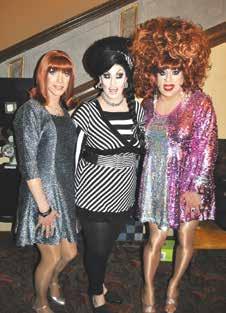
blockbuster new movie release? Go to Netflix. Want to spend hours comparing fashion trends or reveling in the talents of your favorite diva? Go to YouTube. Want to meet the man or woman of your dreams? The internet sources are extensive.
In order to address the shrinking audiences and declining bar sales of not just Oasis, but most venues in San Francisco, we have to get people out of their homes. Personally, I’ve never understood spending hours in front of a television or computer screen, when so many opportunities exist elsewhere. I love to get dressed up, try a new venue, experience a new art form, catch up with friends, and meet new people. And it’s not just because I write a social column for the San Francisco Bay Times! When people talk about getting lost in a rabbit hole on the internet, we are discovering that this experience is by design. Algorithms are carefully designed to steer you to sites you will like and to stimulate your pleasure senses. But how can that compare to live experiences?

Live entertainment often challenges our preconceptions, makes us uncomfortable, and/ or presents us with new ideas. Live venues demand a response, encourage a group experience, and enrich our often-humdrum lives. I dare anyone to compare even the best produced online video with a live performance of Coco Peru or Varla Jean Merman at Oasis. Each of us has friends who have a creative side, maybe rarely seen in public. Why not go to see them compete in a drag competition or share the stage with more seasoned performers for the first time? Oasis deserves credit for championing alternative talents, like
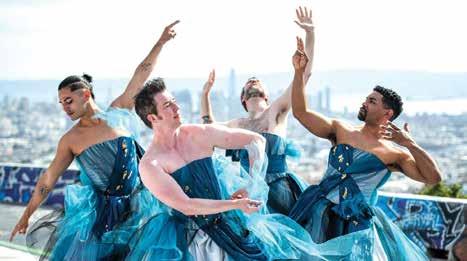
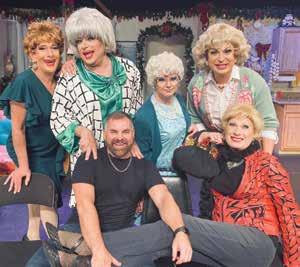

Drag Kings, not easily available elsewhere. From drag and burlesque, comedy and strip tease, solo shows and television parodies, local talents and touring stars, Oasis has it all, but not enough people bought tickets and attended.

The issue of climbing costs is equally tough to tackle. Because I have not been on the management side of a venue, it is less familiar to me, but we have all heard of the many city fees, rising insurance rates, crime statistics, and other expenses that are unavoidable and
always escalating. There has to be a way to balance those expenses with a vibrant and supportive audience, willing to pay for entertainment experiences and willing to leave their homes to get it. The long-running Golden Girls Live found a new home at the Curran Theatre; will more shows have to seek out new locations outside of our established neighborhoods? How much is too much to pay for entertainment? Our community reflects a wide range of disposable income. Each of us decides how many times we can pick up a Starbucks coffee, eat out at a real restaurant, take a trip, or engage in genuine live social interaction. But when it comes to preserving queer entertainment, we should each dig deep.
Some would simply count the closing of Oasis as another casualty of the continuing doom loop in San Francisco, but as those of you who know me have heard me say, “I believe in a hope spiral!” Yes, there are indications of a different trend. The Stud was doomed, but a creative ownership model rescued it from the doom loop. The SF Eagle seemed destined to close, but leaders in the Leather Community found a solution and created a vibrant square featuring the largest Leather flag in the country. The SF Gay Men’s Chorus bought the building in which they rehearse and created the Chan National Queer Arts Center, encouraging musical and other live experiences. People like Juanita MORE!, Sister Roma, BeBe Sweetbriar, Katya Smirnoff-Skyy, Mercedez Munro, and others are constantly offering new and exciting reasons to get out of the house. How many of you have
(continued on page 4)
The primary image on the cover of this issue of the San Francisco Bay Times, of a Castro Night Market scene, was taken by award-winning photographer Mike Kirschner. Many of his images are now featured in the Bay Times, such as in the colorful photo spreads in the last issue documenting several Pride 2025 events. Last year, SF Pride honored Kirschner with the Visions of Pride Award for Favorite Performer Photo for his dynamic, up-close image of Billy Porter performing on the Pride main stage. It is just one of many memorable photos that Kirschner has taken over the years.
“I take a camera wherever I go,” Kirschner says. “I started shooting in 1983 when my parents gave me a Minolta XG-M along with some of my grandfather’s Minolta MC lenses for my birthday. I took it with me to every concert I went to (which was often!) and quickly caught the eye of Relix Magazine as well as John Cipollina’s manager. I was soon on my way to free shows, the photographers’ pit, meeting some of my musical idols, and even a (tiny) little bit of cash!”
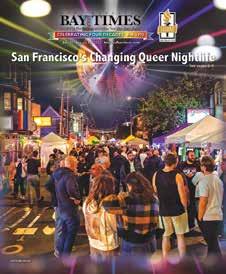
He adds, “I spent lots of time shooting, developing, and printing at the Harvey Milk Photo Center in San Francisco. I lost interest at some point along the way caused, in part, by what I saw as Minolta’s decision to obsolete all my lenses! But then got so frustrated in 2011 when my Panasonic point-n-shoot demonstrated its profound inadequacy to shoot an important show at a nightclub in San Francisco.”
“I did some research and decided on the Pentax universe,” Kirschner says. “I’ve been acquiring M42 and K-mount and other cameras and lenses ever since, and getting back to what I once loved and again love: photography. People doing what they do best—as well as just what they do—is what intrigues me. That leads me to what is now called ‘street photography,’ music photography, and since I live in San Francisco, event photography, where there are events nearly every week that are worthy photographic targets.”
View more of Kirschner’s exceptional work in the Bay Times and at his website: https://mikek.photography/
(continued from page 2)
O’Brien is giving Bar 49 both his business savvy and a distinctive Irish flair. Many of the dishes reflect that, such as Shepherd’s Pie, Bangers & Mash, and Corned Beef & Cabbage. Along with numerous drink selections, all can be enjoyed in a convivial atmosphere with large screens showing music videos, sports, and more.
Rikki’s, which opened during June 2025, is San Francisco’s first women’s sports bar. It is packed nearly every day and night, with lines snaking out the front, evidencing how women have been hungry, not only for women’s sports, but also for a destination gathering spot in the Castro. Co-owners Danielle Thoe and Sara Yergovich have been involving the local community from the very beginning, such as with their fundraising. They successfully raised $425,000 on Wefunder alone.
Still more success has been seen with the Queen Out queer raves held at The Cafe in the Castro and Public Works in the Mission, which serves as both a nightclub and community space.
Queen Out was founded by Jimmy Hadden, a bisexual Black man, and Abby Landis, who is Taiwanese.

They have been striving for diversity and to change some of the stereotypes about the local queer nightlife scene.
Many of the Queen Out attendees are younger Millennials and Gen Zers, who tend to drink less alcohol than previous generations and are leading to more beverage options that are low to no-alcohol. That alone is driving big shifts in the bar scene, along with trends of utilizing more technology and curated aesthetics. “Soft clubbing,” which involves dressing up and going out, but without the pressure of late nights or hangovers, favors cozy cafes, lounges, and other spots with chill beats and early-to-bed routines.
The Castro Night Market and related events throughout the city are additionally growing in popularity. The Castro Night

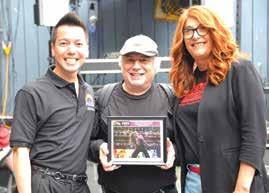
END ERA (continued from page 2)

Market, held on the third Friday of every month, features local food vendors, merchants, and live entertainment. The scope of the events inherently builds a network of supportive small businesses, and many brick-and-mortar clubs, restaurants, and other establishments in and around the Night Markets experience an uptick in revenue on the evenings of the events.
Remaining Hopeful, and a Call for Help
Hopes are high that places like Bar 49 and Rikki’s remain successful and also help uplift other nearby businesses and maybe inspire additional new ones. As The Stud Collective has stated: “One of the best things about nightlife is that the more bars and venues in a neighborhood, the better we all do. If there is one thing The Stud has learned in our 70 years is, it’s not over til it’s over.”
With that in mind, Oasis has put a call out for the community to help by doing two things: Go to the club.
The public is asked to enjoy one (or many!) of the dazzling events lined up through December 31, 2025, culminating in a spectacular New Year’s Eve farewell celebration.
Donate to Oasis Arts.
Individuals are asked to help support the artists, collaborators, and community that have made Oasis so magical. Donations can be made at https://www.oasisartsinc.org/donate
And if you want queer nightlife to thrive, please do what you can to support your own local favorite destinations. Many of us shared the sentiment of State Senator Scott Wiener when he said, in part, upon learning of Oasis’ upcoming closure, “Queer nightlife is a precious thing and we must support it and never take it for granted. It can go away in a heartbeat.”
gone to the Compton Cafeteria Riot play any Friday or Saturday in the heart of the Tenderloin District?
How many of you have attended a Sean Dorsey dance performance, a play by a local playwright at the New Conservatory Theater Center, a community forum at Manny’s, or even had a drink at El Rio, Beaux, or Powerhouse lately?
We live in a vibrant city full of opportunities to widen our worlds, to challenge our thinking, and to meet new people. We can either surrender to this ridiculous doom loop or we can be a part of the hope spiral, with every piece of good news building on the one before it.
SF Pride faced new and unprecedented challenges this year, but from my eyes, its leadership steered it to a record-breaking success. The first lesbian bar in decades opened its doors on Market Street recently and Rikki’s has been packed regularly. The sometimes-sleepy Castro neighborhood is about to see a renaissance with the reopening of the legendary Castro Theatre in January of 2026 and the reconfiguring of Harvey Milk Plaza.
Oasis Arts promises to continue to present dynamic entertainment beyond the four walls of its club, just as AsiaSF performers have transcended their physical location. If Sunday’s a Drag can draw capacity audiences to Club Fugazi in North Beach, anything is possible. We can choose to watch idly from the sidelines or actively engage in positive steps towards a new reality. Put down that computer and get out of the house! You won’t regret it.
Donna Sachet is a celebrated performer, fundraiser, activist, and philanthropist who has dedicated over two decades to the LGBTQ Community in San Francisco. Contact her at empsachet@gmail.com
Photos by Rink
Following a blockbuster turnout for its June event during Pride Month, the Castro Night Market once again drew a large crowd that filled the streets on Friday evening, July 18, 2025.
With “Circus” as its theme for July, the event featured performances by a lineup of artists that included Hunter the Juggler, Opera Paralléle, The Lonely Parrots, and more. DJ sets were presented by DJ Omar and DJ Paul Goodyear. The event also included go-go dancers, acrobats, caricatures, tarot readings, clowns, and art installations by local artists.
San Francisco Bay Times’ team member Juan Davila coordinated a free photo booth with gift bags for children. Bay Times co-publisher Betty Sullivan’s family members Elizabeth and Callie Herren, visiting from Orlando, joined Davila at the booth.
The Castro Merchants Association, sponsor of the Castro Night Market, has expressed thanks to FunCheapSF ( https://sf.funcheap.com/ ) for naming the Castro Night Market as one of its “Most Popular Events” for Summer 2025.
Upcoming Castro Night Markets will take place on August 15, September 19, and October 17.
https://castronightmarket.com/
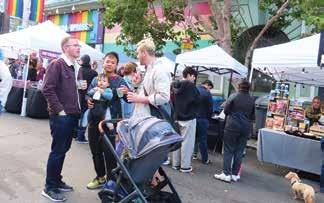
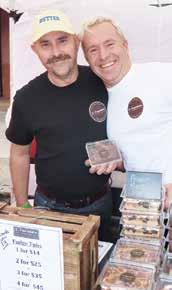


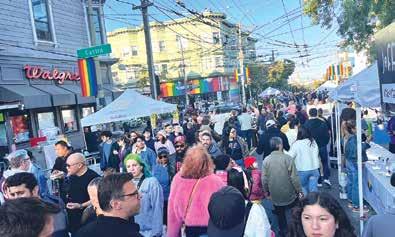
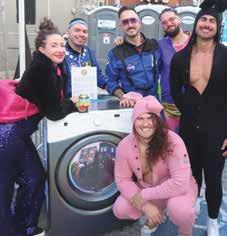

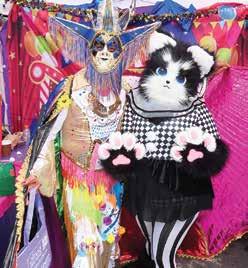
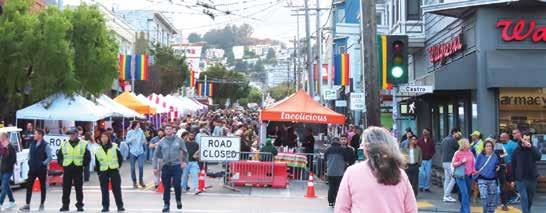
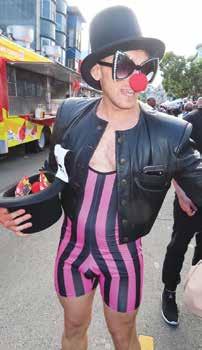


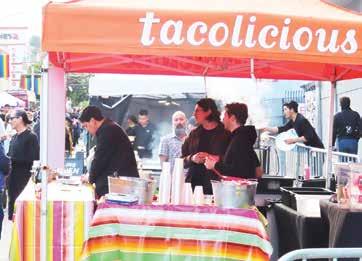
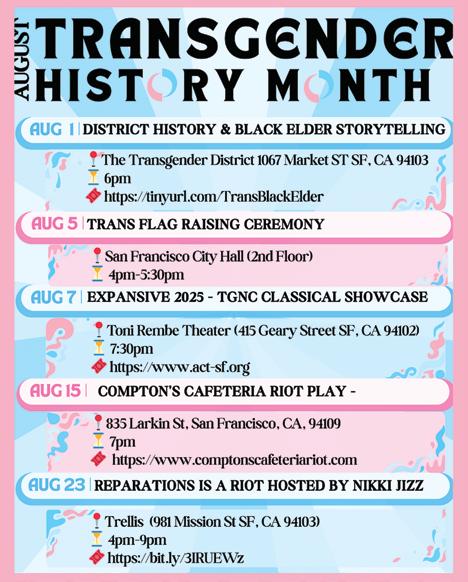

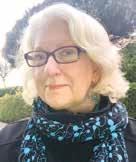
I was in college at UC Santa Cruz during the Vietnam War. After the fall of Saigon in 1975, Daniel Ellsberg, whose leak of the Pentagon Papers had been a turning point in public opinion against the war, came to speak on our campus. The audience was filled with idealistic young activists who had spent their college years protesting that conflict. During the Q&A, a student asked, “We have put our hearts and souls into fighting this war, and now it’s over. What’s next?” Ellsberg’s reply? “Apartheid.”
the skills, strength, and stamina to serve on the frontlines in conflict zones. But all of us can use our voices—either literally, or in print, or social media—to raise awareness, educate others, and speak out when we see injustice. If you have the means, support organizations that are on the frontlines of these battles and are equipped to do the heavy lifting: ACLU, Planned Parenthood, World Central Kitchen, and so many more. Every dollar counts. And if you do happen to have the skills, strength, and stamina, now is the time to build your networks, get connected to people who are already doing that kind of work, and find out what it would take for you to do it yourself. Look into getting the training you might need.
Remember that, for every person on the frontlines, there are countless others at home supporting them and making their work possible. It takes all of us to get the job done.

Ellsberg’s one-word answer spurred many students to turn their energy and their newly honed protest skills toward that important battle. But Ellsberg could have also named any number of other causes, because there will always be a next battle. And, usually, there are multiple battles on multiple fronts. Right now, it feels overwhelming: fighting for our very democracy, for the rights of our most marginalized and vulnerable neighbors, fighting—often literally—in the streets against masked thugs who are making people disappear into inhumane concentration camps here or abroad. And while all that is going on here at home, genocide by starvation is killing people daily in Gaza and Sudan, and Ukraine is fighting for its very existence, and, and, and, and ... what can we do?
This August marks the 5th annual Transgender History Month, which was created by mayoral proclamation in San Francisco in August, 2021. While this is always worth commemorating, it is especially important at a time when our federal government is doing everything in its power to rewrite history, and to completely erase transgender people from public life.
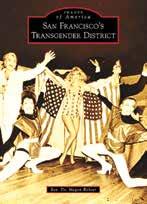
The Transgender District has planned events throughout the month, including “Transgender District History and Black Elder Storytelling” on August 1, featuring Ms. Billie Cooper, Jackie Jackson, and Larry Byes, and hosted by Rev. Dr. Megan Rohrer; the Trans Flag Raising at City Hall on August 5; and the 4th annual “Expansive,” a TGNC classical showcase, on August 7. Rev. Dr. Rohrer is also celebrating the publication of their new book, Images of America: San Francisco Transgender District, with book signings at the Tenderloin Museum on August 7. https://tinyurl.com/THMo25
This week I had a long text conversation with a beloved niece—a trained nurse, who is also the proud mama of a wonderful twoyear-old son. She was in despair from reading the news of children starving in Gaza, of dwindling medical resources in conflict zones, of too much death and destruction, and felt guilty that she is safe here with her son, while her skills could be used elsewhere in conflict zones. She wants to do more.
This is an issue many of us are grappling with. The ship of state seems to be sinking, and all hands are needed on deck. We see the devastation caused by war and genocide, and despair of being able to make a difference.
No one can do everything, but we can all do something. Not all of us are equipped with
Among the many shocking actions taken by the new administration in January was the abrupt dismantling of USAID and pausing of funding for PEPFAR—programs that have saved millions of lives. PEPFAR, created by Republican President George W. Bush, is often cited as one of the most successful global health programs of all time, as well as being a policy success. The past six months of halting USAID, and pausing PEPFAR, has caused serious setbacks to HIV prevention, testing, screening, and treatment programs in the world’s most vulnerable regions.
The recent budget battles in Congress yielded a surprise sort-of-win. A bipartisan effort restored about $400 million of the funding cuts that had been proposed for PEPFAR. The “sort-of win” part? While the funding has been approved, there is still no guarantee that it will actually get
(continued on page 17)
While much has changed since the dark, early years of the HIV/AIDS pandemic, the needed work to fight HIV/AIDS remains and the compassion of AIDS Walk San Francisco participants is as strong as ever.

With the support of generous sponsors, corporate and community teams, thousands of walkers, and dozens of organizations, AIDS Walk San Francisco this year raised more than $800,000 to support community service groups that provide a crucial network of care for HIV-positive people, thereby changing the lives of these individuals for the better and also addressing the root conditions that fuel the virus’ spread.
After enjoying a delicious pancake breakfast, participants joined in the Opening Ceremonies with emcee Dan Ashley, ABC7 News anchor, and UCSF’s Dan Bernal. Both thanked supporters and participants and gave rousing remarks on the significance of the annual event. Ashley is a committed supporter and has served as a host of the event for three decades!
Walkers embarked on a 5K route through the heart of Golden Gate Park, passing dance performances, brass bands, and drum groups on their journey back to Robin Williams Meadow.
Columnist Joanie Juster and other San Francisco Bay Times contributors and supporters are among those who have for decades served as volunteer leaders for this important annual event. Juster, in particular, has been key to the success of AIDS Walk San Francisco, having been actively involved with it since 1988. https://sf.aidswalk.net/
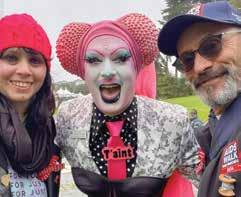

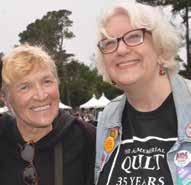
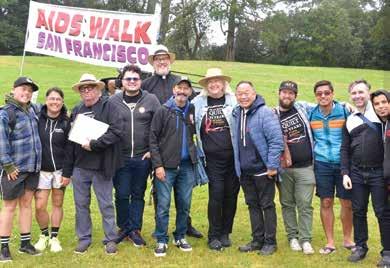
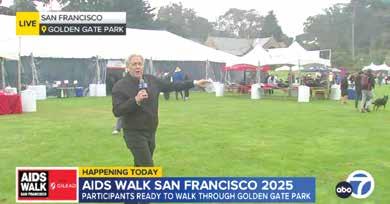
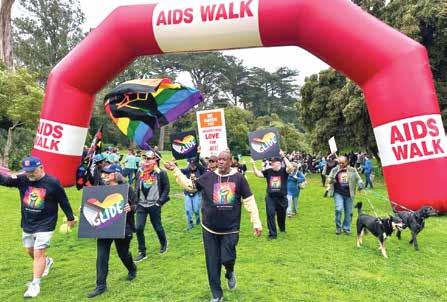
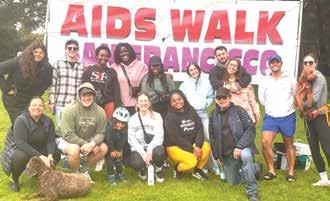
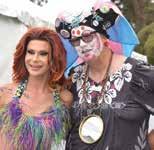
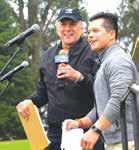

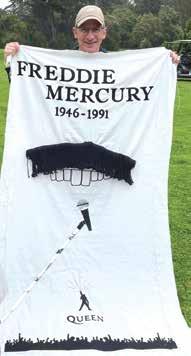
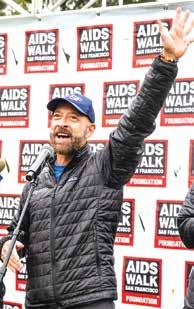
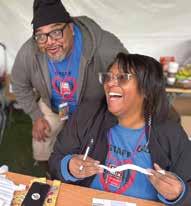
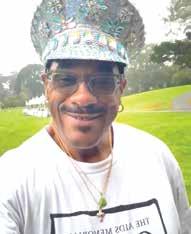



Brandon Miller
Ah, summer—the season of sunshine, signature cocktails ... and a surge of wedding bells. Whether you’re tying the knot on a beach or in a backyard, this time of year often marks the beginning of a new chapter in love and partnership. But while wedding planning typically focuses on florals and first dances, it’s also a critical time to get your financial life in order. And, on the flip side, if your relationship is taking a different turn, this is equally the time to be practical and prepared—because divorce, too, has financial implications that can affect your future well-being.
Let’s look at both sides of the aisle.
Getting Married: Financial Steps for a Solid Start
1. Merge (or Don’t) with Intention
Will you combine finances, keep things separate, or do a hybrid? There’s no one-size-fitsall answer, but the key is open communication. Discuss spending styles, debt, and savings goals.
2. Update Estate Documents & Beneficiaries
Once you’re legally bound, your spouse may have rights to your assets—whether you intended that or not. Update your will, power of attorney, and health care directives. Review beneficiaries on retirement accounts, life insurance, and bank accounts.
3. Review Tax Filing Status
As a married couple, you’ll likely file jointly, which can have significant tax advantages— or not, depending on your combined income. A tax pro can help determine your best option.
4. Health Insurance & Benefits
Getting married may open a special enrollment window for switching health insurance plans. Coordinate benefits to maximize value; sometimes one partner’s coverage is better for both.
(continued on page 16)
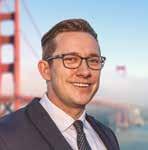
Jay Greene, Esq., CPA
In the San Francisco Bay Area, your estate— your home, tech investments, or digital assets like cryptocurrency—reflects years of hard work. But government instability, such as political unrest or economic uncertainty, can threaten your ability to pass it on smoothly.
Unreliable courts, sudden law changes, or financial crises can disrupt your plans, leaving your loved ones vulnerable. With many Americans lacking a will and a potential federal estate tax exemption drop in 2026, July 2025 is the perfect time to act. Here’s how instability impacts estate planning and three simple steps to protect your legacy, with Greene Law Firm, P.C. ready to assist.
How Government Instability Affects Your Estate Plan
Government instability, such as political gridlock, economic defaults, and shifting regulations, creates challenges for estate planning. In the Bay Area, where estates often include complex assets like startup equity or digital currencies, these issues are significant. Here’s what you face:
• Unreliable Courts: Political turmoil can make courts inconsistent, delaying probate—the process to validate your will. A San Francisco family might wait years to settle an inheritance, facing high legal costs.
• Sudden Law Changes: New taxes or restrictions on asset transfers can disrupt your plan. In extreme cases, assets could be at risk of government seizure.
• Economic Risks: Defaults or currency devaluation can shrink your estate’s value, especially for investments tied to local markets.
• Rights Restrictions: Instability may limit inheritance rights, particularly for diverse families, like the LGBTQ+ community, making clear planning essential. These hurdles can complicate asset management and legal filings, risking delays or losses.
(continued on page 16)

July 2025 marked an exciting milestone in the Golden Gate Business Association’s journey. On July 19, our newly formed 12-member Board of Directors spent a full day together in our first in-person retreat of this board term. While we each bring different skills, identities, industries, and lived experiences to the table, nearly all of us are new to the organization; 9 of our 12 board members have served less than two years. That made this retreat especially meaningful, not just for strategic planning, but for building the kind of trust and cohesion that fuels real progress.
By Aaron Boot-Haury
We invested our time deeply: getting to know one another, aligning on a shared vision, and mapping out actionable goals to guide us through the next several years. Our planning centered around three priority levels of objectives: those that are Critical to Achieve, Necessary to Achieve, and Nice to Achieve, focusing on key areas like membership engagement, events, partnerships, finance, and governance.
Then we got tactical.
We reimagined our committee structure, clarified responsibilities, and set top priorities for each group. For example:
Membership: We’re undertaking a much-needed cleanup of our membership data—not just to ensure accuracy, but to bet-

ter understand who our members are, what industries they represent, the size of their businesses, who are their customers, and more. This insight will allow us to be more intentional in how we communicate and design programming that reflects the true makeup of our vibrant business community and their needs. This process will also involve a review of our membership platform and incorporating automation.
Events: We’re building upon the momentum of our Monthly Make Contact events with plans to enhance to finish 2025 strong, and we’re already looking ahead to a bold 2026. Highlights of things in the works include a Pride Month Business Expo, the relaunch of our Business Accelerator Program, additional educational workshops, and
new collaborations with other chambers and partner organizations to broaden our reach and increase the frequency of events.
Partnerships: We’re identifying and working through a targeted list of potential and former partners including municipal agencies, sports teams, and corporate allies, and reimagining how we structure sponsorship levels and engagement. We’re committed to creating meaningful, mutually beneficial relationships that align with GGBA’s values and mission.
These actions are the foundation for a GGBA that is more vibrant, sustainable, and inclusive. But here’s the truth: while we now have the roadmap, we’re still a volunteer-run
(continued on page 16)

New York Life has received perfect scores of 100% on the Human Rights Campaign Equality Index, evidencing this life insurance company’s strong policies and practices related to LGBTQ+ workplace equality. The company even has an LGBT section prominently featured at its website for the San Francisco office. Here, top agents Kristabelle Kmeid and Christopher Rion Alverson share more about New York Life—the largest mutual life insurance company and the third largest life insurance company in the U.S.— and their future work plans.
GGBA: Please help us understand what your team at New York Life does.
Kristabelle Kmeid and Christopher Rion Alverson: Our team focuses on advanced business planning and financial strategy for business owners. We are part of New York Life’s top team. To make a complicated answer a bit simpler, we focus on supporting business owners in the areas they might not want to handle. Our hope is to make running a business a little less stressful, a little more lucrative, and a lot more passionate!
GGBA: We heard that you are looking to branch out?
Kristabelle Kmeid and Christopher Rion Alverson: We are in the works of cre-

ating our own firm, which would partner with New York Life. However, until then, we are still a part of New York Life. The reason we have worked so hard to create our own team and to have us perform at the highest level is to prove that we can both be successful advisors and support the communities and businesses we came from. We’ve seen lots of smaller businesses be overlooked in the upper world of finance and that didn’t sit right with us. We hope to set an example in the finance industry that not only can we help communities and business owners who need it most, but we can also be top performers while we do it.
GGBA: Who are some of your role models, and especially those who helped to influence your work?
Kristabelle Kmeid and Christopher Rion Alverson: Our families have heavily influenced our practice and the way we run our team. Both of us have families who own businesses. Seeing the rise of a small business to more established businesses within our own families, we saw how difficult the job is. It really gave us a lot of perspective on the struggles our clients face and the passion behind it all.
GGBA: Why did you decide to join the GGBA, and how long have you been a member?

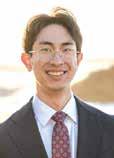
Kristabelle Kmeid and Christopher Rion Alverson: We decided to join the GGBA because the LGBTQ+ community is a big part of what brought us to San Francisco. We are both transplants to The City and wanted to find ways to involve our personal and professional communities. The GGBA is exactly that! We have been members for almost a year!
GGBA: How has being a member of GGBA helped your networking so far?
Kristabelle Kmeid and Christopher Rion Alverson: The GGBA has given us great opportunities to connect with the community in a much quicker and more targeted way. It has given us a safe space to meet likeminded people who aren’t just focused on the bottom line. We have both been able to take major steps towards our goals as a team while also learning and growing with the GGBA and its members.
GGBA: Do you go to the GGBA monthly Make Contact networking events? Have they benefited you and your work, and would you recommend them to others?
Kristabelle Kmeid and Christopher Rion Alverson: We do attend these meetings. It has been very helpful and, honestly, a breath of fresh air. They are wonderful ways to connect with the community in a much less tense and stressful setting. We’d love to see more people there and to see new faces!
GGBA: What advice would you give to someone who is thinking of starting their own business?
Kristabelle Kmeid and Christopher Rion Alverson: Starting a business is hard. Taxes, finance, legal, business structure, retirement, compliance, oh my! There is so much business work to running a business. But we don’t think most business owners open their business to handle the “business work.” The passion, the impact, the legacy, the community ... that’s what we feel is the core of a business. All the other responsibilities are often what weighs in on business owners. It’s not necessary to take on those responsibilities purely on your own as a business owner. Our team, the GGBA, and the members of the GGBA are all here to help keep business owners focused on the important things!
https://www.newyorklife.com/


By Ann Rostow
Deadline? What Deadline?
Hello, my friends. Today we begin with a quiz from Kayla Kumari Updhyaya, writing in Autostraddle, headlined: “Which Lesbian Cleaning Tool Are You?” And, no. The quiz has nothing to do with cleaning tools, focusing instead on the supernatural along with a few of those “what’s your personality?” questions that we used to read aloud to one another out of teen magazines when we were so desperate to see our futures.
“Help!” wrote Updhyaya. “A witch placed a curse on me that forces me to write a sapphic personality quiz that doesn’t really make sense every Sunday! I was just trying to go on my nightly eerie bog walk, and the next thing I knew, a bog hag emerged and declared I must become beholden to the unique powers of the lesbian personality quiz.” Cute, but whatever.
Naturally I took the quiz because a) I love quizzes, and b) This column is due shortly so I’m looking for distractions. And I was gratified to learn, after I finished my thirteen answers, that I am a “Dyson V-10 Animal,” (cue: MGM lion roar).
But perhaps everyone is thus categorized regardless of their quiz results, I wondered. After all, what do we really know about the Autostraddle quiz mistresses? I tested this suspicion by responding with completely different answers and was told I was now a “Toilet Brush.” Since my second answer set was deliberately counter-factual, I was proud that, in real life, I was nothing at all like the sort of person who would wind up under the “Toilet Brush” rubric.
I’ve also decided to add this offering to my weekly challenges, which include The New York Times news quiz, The New York Times flashback game, and the Monday New Yorker crossword puzzle.
That last sentence reminded me to do this week’s “flashback” puzzle, which I totally blew. I’m great on American dates, but don’t ask me when the frigging Sumerians invented the first board game (2500 B.C.) or when someone stole the Mona Lisa before it was famous (1911). Meanwhile, before we start on important GLBT community news, a friend of mine just sent me a snippet from the Cleveland, Ohio, police blotter about two women charged with shoplifting.
“Could have been us back in the day!” my friend mused. No, we weren’t thieves, but I did recognize our fun-loving spirit in the women who were caught stealing two vibrators and six shot glasses from Spencer Gifts, which they secreted in their bra and in a baby carriage in front of a security camera. (If we had been thieves, I can’t imagine we would have sidelined the store inventory in front of a recording device.) The shot glasses were about $50, while the vibrators came to roughly $225.00, which we both agreed was more expensive than we recalled from our misspent youth. And what’s with the baby carriage? Was this a robbery device, or was there an actual infant along for the heists? Police blotters did not elaborate.
Between What I Write, and What I Skip
Here’s an article from Foreign Affairs that I’ve set aside for thoughtful consideration, titled: “The Global Threat to LGBTQ Rights.” The time has now come for me to shrug off the mindless nonsense that I find so compelling and devote what looks like an hour at least to carefully reading about the dangers our community members face around the world and the complicated 20-year backstories that set the stage for our precarious positions in numerous countries.
But you know what? I’ve decided to skip it. We already know we’re in bad shape. We know our civil rights movement is taking two, three, dozens of steps back. We know the arc of the moral universe bends towards justice, but as the first part of the quote observes, the arc of the moral universe is also long. Very long. Right now, I can’t even see it.
The search results for GLBT news are filled with the financial hits to local LGBTQ centers, which have lost public and private funding thanks to the backlash against equality and diversity. I dropped the subject of “cost cutting” from my news list, because I would have spent 2,000 words hopping from Milwaukee (lost $900,000 in federal cash) to San Diego (dozens face layoffs), to, of course, the eradication of the “press three” option on the 988 suicide hotline.
Since 2022, GLBT callers under 25 could press three to speak to a person trained to counsel troubled gay or trans youth. That option was summarily removed on July 17, although the option to press one for veterans remains. The specialized service cost taxpayers about $25 million a year, and over nearly three years, calls tripled from about 20,000 to about 60,000 a month as awareness of the option grew.
You don’t need to be reminded of the suicide statistics for gay and trans youth. They’re high.
So, the bottom line is that I am tired of bad news. I have a couple of newsletters that feature good news, or optimistic news, or no-politics zones. But strangely, I’m kind of tired of them too. We just slapped 100 percent tariffs on Micronesia for no reason and sent a U.S. citizen to a jungle prison in the Amazon basin, but look at the bright side! A park ranger saved a bear cub! (And yet, I’ll read every word of the bear cup story, won’t I?)
RIP Andrea
I was trying to come up with a title for the last section’s juxtaposition of bad news and look-the-other-way news, and I heard an echo in my mind of a poem by Nobel Laureate Octavio Paz, which begins:
Between what I see and what I say, Between what I say and what I keep silent, Between what I keep silent and what I dream,
Between what I dream and what I forget: poetry.
(continued on page 17)

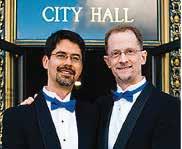
Stuart Gaffney and John Lewis
It’s hard for us to use the past tense when describing our phenomenal sister and sister-in-law Patty Gaffney. But slightly less than two years ago, Patty was diagnosed with aggressive metastatic breast cancer completely out of the blue. And in July, she passed away at age 48–yet another life tragically cut short by the disease.
Patty, along with her little brother and big sister, were the children of Stuart’s dad’s second marriage. We very fondly remember all the fun we had playing with them as small children on trips to their home in Southern California when we were in our 20s. One time when John was nearby for work, he accompanied Patty and her mom to the school science fair. When they came upon Patty’s project, they were delighted to see it had won a blue ribbon. Of course, we were proud of Patty’s achievement, but also a bit surprised because we had no idea about Patty’s interest and aptitude in science. It turned out the blue ribbon was a harbinger of much bigger things to come.
Patty went on to earn a Doctor of Veterinary Medicine and master’s degree in preventive medicine from UC Davis, one of the top veterinary schools in the country We’ll never forget Patty’s first publication as a student–the subject was rhino poop! She then completed a Ph.D. in integrative pathobiology from Davis and her Diplomate as a specialist in anatomic pathology.
Patty always considered her degrees and expertise as a means to do good in the world and devoted her immense intellect to disease prevention in endangered species and other wildlife. An early project with colleagues was pathbreaking efforts to protect the endangered Channel Island fox–collective work that resulted in the four species of these foxes no longer being endangered as of 2016.
Patty eventually got her dream job–Director of Disease Investigations at the San Diego Zoo Wildlife Alliance. In that position, she was a leader in detection, and thereby prevention and treatment, of disease not only at the Zoo but also at

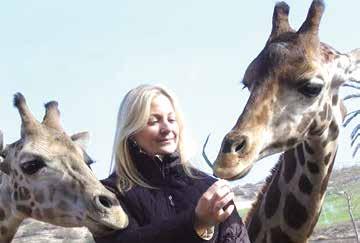
the institution’s numerous collaborative wildlife projects around the world. Her work took her around the U.S., as well as overseas to places such as Africa, China, and Pakistan. Dr. Stephen Chege, a Kenyanbased colleague and mentee, with whom Patty worked closely in efforts to save the critically endangered Hirola antelope, put it succinctly that Patty’s life’s work was to help “end disease-induced extinction of endangered species.”
The population of Hirola antelope has declined 95% over the last four decades, down to less than 500 today, according to the Hirola Conservation Program. Chege described how “Patty was deeply passionate about Hirola conservation and devoted herself tirelessly to protecting this remarkable species from extinction.”
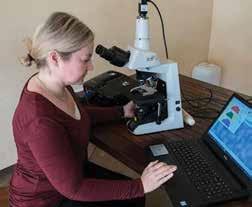
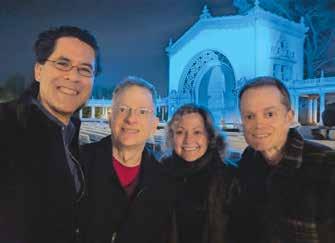
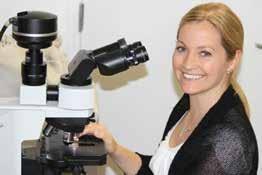
and Wildlife Health Officer of the San Diego Zoo Wildlife Alliance, echoed these impressions of Patty, describing her as “professional, curious, tenacious, strong, and fearless,” in addition to being “a fabulous pathologist, diagnostician, scientist, teacher, mentor, and leader.”
And at the same time, she lauded Patty as being “beautiful, funny, and kind.”
Despite the fact that Hirolas’ natural habitat is in areas of northeast Kenya and neighboring Somalia subject to terrorism, civil unrest, and other violence, Patty’s “commitment never wavered,” he explained.
Emblematic of that commitment was a particular trip she made in which Chege described “she flew into Ishaqbini, the heart of Hirola territory, during heavy rains. The roads from the airstrip to the Hirola sanctuary headquarters were flooded and impassable. Anyone else would have turned back—but not Patty. Her determination was unmatched. She waded through the waters to reach the sanctuary” to pursue their work. It was “inspirational and unforgettable,” and Patty’s “contribution to Hirola conservation will be remembered for generations,” he said.
Dr. Nadine Lamberski, Chief Conservation
She summed up Patty perfectly. Patty was remarkable for how warm, caring, personable, and fun-loving she was, in addition to being a first-rate scientist who Lamberski said made “us all better (and smarter).”
Indeed, we recall that Patty was both her high school class valedictorian and senior prom queen. Chege described how Patty “always looked after” him on professional visits to San Diego, surprising him one morning with a cup of African mixed tea she brewed herself. And Patty’s colleagues were enormously generous and helpful to her as her disease progressed. In hearing stories and seeing photos, we marveled at how much fun they seemed to have together even as they navigated the formidable challenges they had as scientists working to save the lives of vulnerable species.
Patty took delight in explaining veterinary and other medical matters to us, employing sophisticated scientific vocabulary that kept our heads spinning and our fingers nimble googling unfamiliar terminology. But Patty
was not only up to date on veterinary pathology, but on the latest celebrity gossip on TMZ, too. Patty’s paella and roasted game hens were unsurpassed, and helping her prepare and cook a meal was a joy.
One evening when she was in San Francisco to conduct a hippopotamus necropsy (autopsy), she called us spontaneously to grab a bite of dinner, and as we drove to the restaurant with Patty and a colleague, jars of hippo samples preserved in formaldehyde jostled behind us.
Patty was also deeply devoted to her Labradors, named Halley (for Halley’s Comet), Andi (for Andromeda), and Cassie (for Cassiopeia), who brought her much happiness. And Patty loved adventures, such as camping out in the desert with her younger brother, friends, colleagues, and their dogs to catch the dazzling Perseid meteor shower light up the night sky. Patty was also very supportive of the LGBTIQ+ movement and proudly joined us to march with our family in the SF Pride Parade and for our wedding.
Patty received her cancer diagnosis with striking equanimity. Although, of course, she was shocked and upset, she approached having a terminal illness with both acceptance and the tenacity to pursue every possible treatment. Exhibiting her emotional clarity and maturity, as well as her personal character and constitution, she told us: “I’m going to do everything I can, until I can’t–then, I won’t.”
Patty absolutely loved what she did and was in the prime of her career; for as long as possible, she was not going to let the disease or afflictive emotions stop her. Perhaps Patty even surprised herself, once remarking that if she as a pathologist were reviewing her own medical chart, she would think the person was undoubtedly hospitalized and not still working full-time as she was and enjoying adventures with beloved family and
(continued on page 16)
Breast cancer touches 1 in 8 women—straight, lesbian, cis, black, white, brown, and trans—alike. It can even affect men. It can affect anyone. October is Breast Cancer Awareness Month. It’s when the world unites in the fight against this horrible disease. This year, the San Francisco Gay Men’s Chorus is bringing the fight to the stage in a powerful, healing way with the Bay Area premiere of Sing for the Cure.
At its core, Sing for the Cure is a moving song cycle for mixed SATB (Soprano, Alto, Tenor, and Bass) chorus and orchestra that weaves together real-life stories from breast cancer patients, survivors, and their loved ones. The lyrics are drawn from interviews, journals, and letters, capturing the raw honesty of fear, the quiet strength of perseverance, and the soaring triumph of survival.
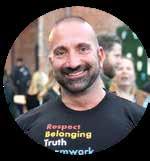



Set to a powerful and diverse musical score by ten acclaimed composers—including Joseph Martin, Robert Seeley, Rosephanye Powell, and David Friedman —the work spans genres from classical and gospel to folk and contemporary choral music.
Each of the 11 movements tells a story—from diagnosis to treatment, from isolation to resilience—mirroring the emotional landscape of anyone who has faced cancer. There are pieces about the moment one learns
(continued on page 17)
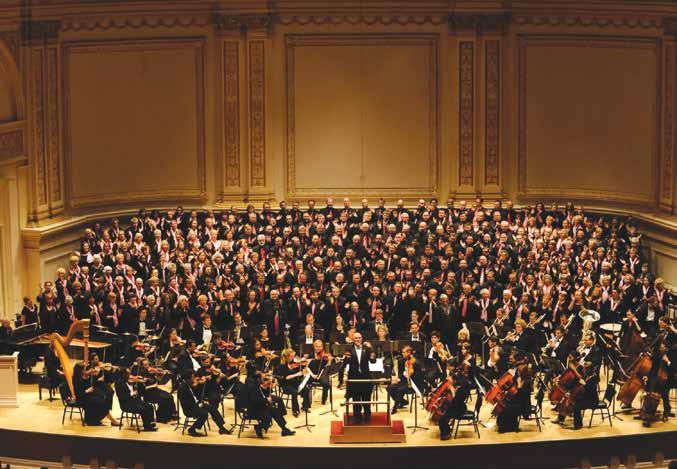



Roland Schembari and Bill Hartman, Co-Founders
Randy Alfred, Founding News Editor, 1978
Kim Corsaro, Publisher 1981-2011
2261 Market Street, No. 309
SaN FraNciSco ca 94114
PhoNe: 415-601-2113
525 Bellevue aveNue oaklaNd ca 94610
e-Mail: editor@sfbaytimes.com www.sfbaytimes.com
The Bay Times was the first newspaper in California, and among the first in the world, to be jointly and equally produced by lesbians and gay men. We honor our history and the paper’s ability to build and strengthen unity in our community.
The Bay Times is proud to be the first and only LGBTQ newspaper in San Francisco to be named a Legacy Business, recognizing that it is a longstanding, community-serving business that is a valuable cultural asset to the city.
dr. Betty l. SullivaN/JeNNiFer l viegaS
co-PuBliSherS & co-editorS
Beth greeNe, JohN SigNer, Michael delgado deSigN & ProductioN
kate lawS BuS NeSS MaNager
Blake dilloN caleNdar editor
kit keNNedy Poet-iN-reSideNce
J.h herreN techNology director
carla raMoS weB coordiNator
Mario ordoNez diStriButioN
JuaN r davila voluNteer coordiNator
WRITeRS
Rink, Sister Dana Van Iquity, Ann Rostow, Patrick Carney, Leslie Sbrocco, Kate Kendell, Gary M. Kramer, Joanie Juster, Robert Holgate, Eduardo Morales, Dennis McMillan, Tim Seelig, John Chen, Rafael Mandelman, Jewelle Gomez, Phil Ting, Rebecca Kaplan, Philip Ruth, Bill Lipsky, Elisa Quinzi, Liam Mayclem, Beth Schnitzer, Andrew Freeman, Kippy Marks, Catherine Stefani, Donna Sachet, Gary Virginia, Derek Barnes, Marcy Adelman, Jan Wahl, Stuart Gaffney & John Lewis, Brandon Miller, Jamie Leno Zimron, Howard Steiermann, Fernando Camino, Honey Mahogany, David Landis
PhOTOgRaPheRS
Rink, Paul Margolis, Bill Wilson, Michael Kirschner, Sandy Morris, Karina Patel, Abby Zimberg, Joanie Juster, Debra Reabock
aDVeRTISINg
Display Advertising Standard Rate Cards http://sfbaytimes.com/ or 415-601-2113
Custom ad sizes are available. Ads are reviewed by the publishers.
National Advertising: Contact Bay Times / San Francisco. Represented by Rivendell Media: 908-232-2021
Circulation is verified by an independent agency. Reprints by permission only.
CaLeNDaR
Submit events for consideration by e-mail to: calendar@sfbaytimes.com
© 2025 Sullivan Communications, Inc



DATE: July 17, 2025
FROM: Inder Grewal, Development Specialist
RE: Request for Proposals (“RFP”) for Hunters Point Shipyard and Candlestick Point Project Infrastructure Engineering Support Services
The Office of Community Investment and Infrastructure (“OCII”) is seeking qualified applicants to submit proposals to provide:
Hunters Point Shipyard and Candlestick Point Infrastructure Engineering Support Services
Acting on behalf OCII, the selected contractor(s) will work closely with City departments and private developers to advance the planning, design, construction, and acceptance of key infrastructure improvements related to the development of Candlestick Point / Hunters Point Shipyard Phase 2 and Hunters Point Shipyard Phase 1. Services will include conceptual planning, coordination of existing streets and utility systems, subdivision mapping, land transfers, infrastructure design integration, and construction oversight. Ideal candidates will bring demonstrated technical expertise, a strong track record navigating San Francisco’s development and permitting processes, and the ability to collaborate effectively with public agencies, environmental regulators, developers, and other project stakeholders.
OCII’s Small Business Enterprise (SBE) Policy establishes a 50% good faith effort SBE participation goal for this project. First consideration will be given to SBEs located in zip code areas 94124, 94134 and 94107, followed by San Francisco based SBEs, followed by all other SBEs.
Proposal submittals will be accepted until 4:00PM on Thursday, September 4, 2025. To obtain a copy of the RFP, please visit: http://sfocii.org/rfps-rfqs-bids.
For questions regarding this RFP, please contact Inder Grewal at Inderbir.Grewal@sfgov.org.
7/31/25 CNS-3948344# San Francisco Bay Times


ABy Donna Sachet
fter such a busy SF Pride season, it was a relief to relax and rejuvenate at the Russian River last weekend. With longtime friend Bob Brunson, now residing in Alabama, but back to the Bay Area for a brief visit, we packed the convertible and took off on a road trip with an enthusiastic Peanut in tow.

In our various trips north to the Russian River and to Guerneville specifically, we’ve never found a place more convenient, hospitable, and comfy than the r3. Welcomed by familiar faces, like Leslie Sachrison, we were quickly unpacked into a cozy room and ready to explore. During the weekend, we ate simply at the dependable Pat’s on River Road and Coffee Bazaar on Armstrong Woods Road and Baked on the River, the newest restaurant at the r3 resort, where the female Swedish chef is perking things up. While there, we caught up with several old friends and made a few new ones.
Saturday night we caught a show at the r3 and spent some relaxing evening hours at the legendary Rainbow Cattle Company, where the staff exudes friendliness. Sunday came too soon, but we had to dash back to the city for a big annual event.
Help is on the Way XXXI: Broadway & Beyond, Richmond/Ermet Aid Foundation’s annual gala fundraiser, was Sunday night, July 20, 2025, at the Marines’ Memorial Theater. It benefited their Small Emergency Grants Program and Project Open Hand.
Rushing from the River made us a tad late, but from our VIP Celebrity Circle seats we thoroughly enjoyed the entertainers we saw, especially local favorites Paula West, Jason Brock, and Leanne Borghesi and visiting Bruce Vilanch, Sharon McNight, Garrett Clayton, and Sam Harris. Members of the cast from the Broadway show & Juliet added a number of solo, duet, and ensemble numbers. Lenny Broberg flew in to conduct the live auction and managed to find enthusiastic bidders for everything. During intermission and at the reception at the Beacon Grand Hotel, we enjoyed catching up with Jeff Doney & Adam Thier, Sophie Azaoaou, Cameron Stiehl, Doug Waggener, Cicero Braganca, Don Berger, Ben Wong, Leandro Gonzales, and many others.
We had a chance to sit down and interview Bruce Vilanch a couple of days after the Sunday show and to talk about his new book It Seemed Like a Bad Idea at the Time. The book is a whirlwind of ill-conceived television and other shows that were so bad that they have become good. Imagine A Star Wars Holiday Special, The Paul Lynde Halloween Special, or variety shows with Charo or Carol Channing. This hilarious man has been writing material for The Academy Awards for 25 years, so he certainly knows his craft, but has no trouble poking fun at even his less than successful ventures.
Beyond the book, Bruce expressed a genuine fondness for San Francisco. Robin Williams once offered him a tour of the city through his eyes and we can only wonder what that involved. We offered a similar tour through our eyes and will let our readers know when it happens. Bruce shares a special friendship with so many celebrities, including Bette Midler, Cher, Whoopi Goldberg, Donny & Marie Osmond, Florence Henderson, and more, for all of whom he has provided comic material.
As a matter of fact, it all began with Bette Midler. When he saw an early performance of hers, he suggested that she talk more. Her reply? “Got any lines?” And yes, he did and continues to.
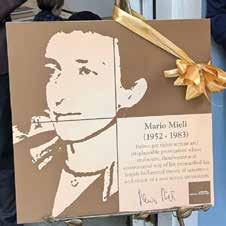
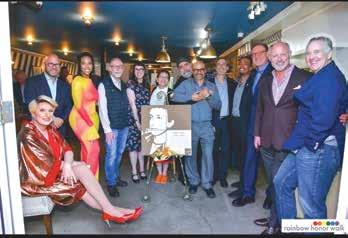
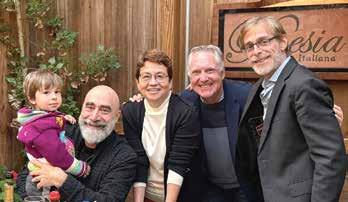
also celebrated outgoing San Francisco Consul General of Italy, Sergio Strozzi, who will be returning to Rome
Pick up the book right away and delve into this light side of an extraordinarily successful writer. With new projects in the works with Disney and an original play of his own, Bruce Vilanch isn’t going away any time soon.
Mazzetto and son Matteo. https://rainbowhonorwalk.org/
Donna Sachet is a celebrated performer, fundraiser, activist, and philanthropist who has dedicated over two decades to the LGBTQ Community in San Francisco. Contact her at empsachet@gmail.com
5. Talk Goals—Big and Small
Whether it’s buying a home, traveling the world, or starting a family, your shared dreams have financial price tags. Build a joint financial plan that supports them.
If You’re Getting Divorced: Plan First, React Later
Not every love story ends with a “happily ever after,” and if divorce is on the horizon, emotions can run high. But from a financial standpoint, staying grounded and proactive can make all the difference.
The Road to Divorce: Tackle the Emotional First, Then Financial Don’t rush decisions—take time to process before making major financial moves. Bring in objective third parties (like a financial planner or lawyer) to guide you with a clear head.
As for practical matters, if possible, address living arrangements before the situation becomes contentious. Secure separate housing, if possible.
It’s also a good time to button up your passwords and privacy. Change all logins for your accounts and devices, especially anything financial or shared.
Estate Planning
Update wills, healthcare proxies, and beneficiary designations to reflect your new status as a single individual.
Health Insurance
If you were covered under your spouse’s plan, research COBRA or other coverage options as soon as possible.
Social Security
If you were married for at least 10 years and never remarry, you may be eligible for benefits based on your ex’s record—without impacting their benefit.
Timing Considerations
• California has a mandatory 6-month waiting period.
• Your marital status on December 31 determines your tax filing status for the entire year.
Redefining Your Financial Life, Budget & Cash Flow
With two households, expenses shift dramatically. Build a new budget that reflects your solo lifestyle.
Spousal Support
If there’s a significant income gap, plan how money will flow post-divorce, whether through alimony or negotiated support.
Dividing Assets (CA Edition)
California is a community property state, meaning assets acquired during the marriage are typically split 50/50. But that doesn’t always mean each account is split in half.
• Equal ≠ Identical: $1M in a taxable account isn’t equal to $1M in a Roth IRA—consider taxes and liquidity.
• Valuation Date: Assets are valued at the time of separation, not when the divorce is finalized.
Real Estate
Options include selling, buying each other out, or temporary shared ownership for the sake of children.
Equity Compensation
For vested vs. unvested stock matters, get a
clear picture of the current and future value.
Pensions
Determine how much the non-employee spouse is entitled to and when they can receive it.
The Marital Settlement Agreement
This is the blueprint for your financial and custodial arrangements going forward. Almost everything is negotiable, but be thoughtful as renegotiation is rare unless there’s a major life change.
Children and Custody
• Decide on custodial arrangements and how child support will be structured.
• Clarify who can claim children on their tax return—it can’t be both of you.
Marriage and divorce both bring financial complexity, but also opportunity—for clarity, for a new plan, and for the life you want to build. Whether you’re walking down the aisle or through a courtroom, take the time to get the advice and support you need. And remember: your financial life doesn’t just reflect your past—it shapes your future.
This material presented by Brio Financial Group (“Brio”) is for informational purposes only and is not intended to serve as a substitute for personalized investment advice or as a recommendation or solicitation of any particular security, strategy, or investment product. Facts presented have been obtained from sources believed to be reliable, however Brio cannot guarantee the accuracy or completeness of such information, and certain information presented here may have been condensed or summarized from its original source. This information may contain certain statements that may be deemed forward-looking statements. Please note that any such statements are not guarantees of any future performance, and actual results or developments may differ materially from those discussed. No investor should assume future performance will be profitable or equal the previous reflected performance. Any reference to an index is included for illustrative purposes only, as an index is not a security in which an investment can be made. They are unmanaged vehicles that serve as market indicators and do not account for the deduction of management fees and/or transaction costs generally associated with investable products. The S&P 500 Total Return Index represents U.S. stock returns. This includes 500 leading companies in the U.S. and is widely regarded as the best single gauge of large-cap U.S. equities, where dividends are reinvested. The holdings and performance of Brio client accounts may vary widely from those of the presented indices. Brio does not provide legal or tax advice, and nothing contained in these materials should be taken as legal or tax advice. Advisory services are only offered to clients or prospective clients where Brio and its representatives are properly licensed or exempt from licensure. No advice may be rendered by Brio Financial Group unless a client service agreement is in place.
Brandon Miller, CFP®, is a financial consultant at Brio Financial Group in San Francisco, specializing in helping LGBT individuals and families plan and achieve their financial goals. For more information: https://www.briofg.com/
You can’t control government stability, but you can build a strong estate plan. Here are three key steps:
• Work with experienced attorneys. An attorney with deep knowledge can navigate unpredictable laws, ensuring your plan stays effective. They can tailor solutions to protect your assets, no matter the circumstances.
• Use flexible trusts. Trusts, unlike wills, adapt to new laws and often skip probate, saving time and money. A revocable trust lets you update terms if policies change, keeping your estate secure.
• Plan for digital assets. Include online accounts, like email or cryptocurrency, in your plan. Name a trusted person to manage them and use tools like password managers to ensure access, preventing loss of valuable assets.
These steps are straightforward and effective, helping your family avoid stress and uncertainty.
Many Americans lack an estate plan, leading to family disputes or financial losses, which instability worsens. The federal estate tax exemption, currently $13.99 million, may drop to around $7 million in 2026, potentially increasing taxes for Bay Area estates. Starting your plan now ensures your wishes are honored and your loved ones are protected, no matter what lies ahead.
Let Greene Law Firm, P.C. Help
At Greene Law Firm, P.C., we understand the Bay Area’s unique needs. We create estate plans that stand up to challenges like government instability. We serve all families, including the LGBTQ+ community, with clear, personalized solutions. Don’t wait: call 415-905-0215 or email info@greenelawfirm.com to schedule your consultation today.
Statements in Compliance with California Rules of Professional Conduct
This article is for educational purposes only and does not constitute legal advice. Consult an estate planning attorney for personalized guidance.
GGBA/BOOT-HAURY (continued from pg 9)
organization, with no paid staff (yet). To truly bring this plan to life, we need your help.
If you’re passionate about planning events, working with partners and corporate sponsors, or welcoming new members to our community, we invite you to join one of our revitalized committees that are open to non-board members:
• Events Committee
• Partnerships/Sponsorship Committee
• Membership Ambassadors
You don’t need to be an expert, and the only requirement is to be a member in good standing and a passion to help us build something great! To get involved, email us at ec@ggba.com
We’re laying the groundwork for the next chapter of the GGBA. Let’s build it together.
With Pride and Purpose, Aaron Boot-Haury President & CEO Golden Gate Business Association (GGBA) president@ggba.com https://www.ggba.com/
GAFFNEY/LEWIS (continued from pg 12)
Jay Greene, Esq., CPA, is the founder of Greene Law Firm, P.C., in San Francisco, dedicated to helping LGBTQ+ individuals and families secure their future. For more information, visit: https://www.greenelawfirm.com/ friends.
Of course, Patty remains alive in our hearts and the hearts of many others. And we know that Hirola antelope, Channel Island foxes, and other creatures would be thanking her for all her efforts on their behalf if they could. Patty leaves a marvelous legacy of fun, joy, and devotion to the health and wellbeing of all beings, both animal and human—and a dream that we could all inhabit the world together in harmony. John Lewis and Stuart Gaffney, together for over three decades, were plaintiffs in the California case for equal marriage rights decided by the California Supreme Court in 2008. Their leadership in the grassroots organization Marriage Equality USA contributed in 2015 to making same-sex marriage legal nationwide.
(continued from pg 6)
distributed, and the future of the program remains up in the air, subject to the whims of this notoriously fickle administration. Also, thanks to this administration’s priorities, there has been less support for HIV prevention, coupled with a specific prohibition on support for PrEP except for pregnant and breastfeeding women. In short, they will support preventing transmission from mother to child, but not from adult to adult. Other high-risk groups—like gay men and transgender people—may suffer devastating setbacks.
However, while Congress was busy playing Russian roulette with people’s lives, there was good news from the recent biennial meeting of the International AIDS Society, where it was reported that the World Health Organization is officially endorsing use of the new twice-yearly injectable form of PrEP, which has proved to be more than 99 percent effective in protecting people from contracting HIV.
Keep contacting your members of Congress to urge them to keep funding PEPFAR, and to remove the restrictions on who can receive PrEP. Too many lives are at stake to let this issue slip by.
AIDS Walk 2025 Raises $891,505
July 20 dawned damp and foggy, but the heavy mist didn’t dampen the energy of the crowds that came out for the 39th annual AIDS Walk San Francisco. This beloved annual tradition brings together thousands of people for whom HIV/AIDS is not a forgotten issue, but an important part of their lives. AIDS Walk has built a community of people who are grateful to be among so many others who understand the need to keep funding services for people with HIV/AIDS.
Next year, AIDS Walk will commemorate its 40th year in San Francisco. It’s always the third Sunday in July, in Golden Gate Park, so make your plan now to be there. https://sf.aidswalk.net/
Joanie Juster is a long-time community volunteer, activist, and ally.
SING FOR THE CURE (continued from pg 13)
of a diagnosis, or how children will live and thrive without a parent. What sets Sing for the Cure apart is its ability to transcend personal pain and create a shared space for remembrance, solidarity, and healing. The emotional impact is profound and lasting.
It’s more than a concert; it’s a powerful, emotional journey through music that honors those affected by breast cancer and unites communities in the fight for a cure. Originally commissioned by the Turtle Creek Chorale under the direction of San Francisco Bay Times columnist Dr. Timothy Seelig, this choral masterpiece has touched thousands of lives across the United States since its debut in 2000.
“Sing for the Cure is one of the most profound projects I’ve ever had the honor to conduct,” said Dr. Seelig, who is the Conductor Emeritus of the San Francisco Gay Men’s Chorus (SFGMC). “It gives voice to the voiceless, comfort to the grieving, and strength to those still fighting.”
The performance is designed to raise awareness and to provide support (through a portion of ticket proceeds) to local women’s health organizations. It offers audiences not only an unforgettable artistic experience, but also a way to take action and directly contribute to a meaningful cause. For performers, it becomes a deeply personal expression of empathy and community, and for audiences, a reminder that no one faces cancer alone.
The San Francisco premiere will be led by Paul Saccone, who has been conducting and singing with SFGMC for over 20 years. Jake Stensberg, SFGMC Artistic Director, adds, “This music transforms heartbreak into healing and reminds us all that love, courage, and community are stronger than cancer.”
“In an era when health crises continue to divide and isolate, Sing for the Cure stands as a bold reminder of music’s capacity to bring people together,” said Christopher Verdugo, CEO of SFGMC. “It invites us to remember, to honor, and to act—not just for those we have lost, but for those still fighting and those yet to be diagnosed.”
As breast cancer continues to touch millions of lives, the message of Sing for the Cure grows ever more urgent. Through its soaring harmonies and courageous storytelling, it reminds us that, while cancer may silence voices, it cannot quiet the power of a united chorus calling for hope, healing, and change.
Sing for the Cure will be performed on SFGMC’s 47th birthday: Thursday, October 30, 2025, at The Chan National Queer Arts Center. The chorus will be partnering with community singers to create a mixed SATB chorus along with chamber orchestra. Singers and volunteers are welcome to join us and participate in this amazing experience. For more information, please e-mail sftc@sfgmc.org
Paul Saccone is a Senior Director at Adobe and the Vice President of Marketing at Frame.io. He is also volunteering as an Artistic Director and Conductor for an ensemble of the San Francisco Gay Men’s Chorus.
ROSTOW (continued from pg 10)
I have an analytical mind, not an artistic one, but this idea of liminal spaces and the richness of meaning that falls into those spaces and cannot be expressed—this made me feel as if Paz had given me a gift. I also thought the last word there could just as easily have been “music.” Maybe, I’ll have to think about that. The problem is, as soon as you name something, as soon as you say it or write it, you weigh it down and kill it in a way. Unless you’re a brilliant poet, I guess.
Speaking of which, I’ve been haunted recently by the poet Andrea Gibson, whom I had never heard of until they died young the other day. They were 49, but I consider anything under 60 “dying young,” a limit that rises with every new landmark age I happen to hit myself. Gibson was felled by ovarian cancer, but what struck me as I read their obituary and some of their poems was their kindness and their ability to inhabit those spaces we were just talking about. Facing death, they embraced it and held it back and came at it from a timeless place where we all exist at once in some way. I suggest you look them up rather than rely on my cumbersome interpretation.
Finally, Gibson seemed to be such a good person. These days, I am inundated by negative emotions from all sides of the political, generational, and cultural divides. It’s exhausting. I sense it saturating my psyche. Reading about Gibson reminded me that it’s possible to feel compassion and gratitude and empathy and forgiveness towards anyone and everyone. Don’t get me wrong, I’m not that nice personally. I just wish other people were.
To Russia With Love
Here’s a story I sort of enjoyed, because as I just mentioned, I’m nice, but not super nice. It’s about a 40-something Texas guy who took advantage of a bizarre-sounding Russian deal, called the “Shared Values Visa,” which allows you to relocate to Russia if you’re sick of the politically correct ethos of the United States. I’d think you would have less of a problem with woke sensibilities these days, but let me continue.
According to the media and their own YouTube channel, Derek Huffman moved his wife and three pre-teen daughters to a village outside Moscow that was founded by another loony American ex-patriot, blogger Tim Kirby, who helps others escape the “LGBTQ+ indoctrination” and the “liberal gender norms” of the U.S. Huffman was under the impression he would become a war correspondent or a mechanic, but instead he’s being sent off to the frontlines of combat with next to no training. Oops!
His wife, DeAnna, tells her social media friends that he’s received no pay, and, in fact, he and his fellow “recruits” had to pay 10,000 rubles for their own equipment, about $125.00, which is not helpful for a family that had to crowdfund to pay for their relocation to their lovely new home. Now, Huffman’s wife complains he’s been “fed to the wolves.” Owww wooooooo!
Meanwhile, CNN and others report that Russia is sending badly wounded troops back to the front, including men on crutches and others fresh from surgery. The news service said videos show one man who says he had surgery “yesterday.” Inside his vehicle, CNN reports, “he shows his badly wounded leg, where a large injury has
recently been operated on, he says. He also holds up his wounded hand. ‘I don’t have a finger; they also sewed it up yesterday. I can only move using crutches.’” Another passenger on the route to the frontline tells the camera: “There’s a tube in my stomach.”
According to another soldier, the government pays up to $30,000 for a combat injury, but is trying to avoid such obligations. “They’re sending cripples back to the front ... to avoid paying money,” the soldier says. “If the person is missing, the family doesn’t get paid money. For the proof, a body is needed, and if there’s no body, that’s it, sorry, goodbye.”
I’ve read other unsourced stories about wounded men being shot rather than transported to medical facilities. And other iffy reports describe the brutal, if not murderous, treatment of men who don’t fight hard enough or displease their commanders in some other way. As I mentioned, this is hearsay, not reporting.
Lastly, an unconfirmed, and likely untrue, story in The Maltese Herald says Huffman was killed on July 23. However, there is no confirmation of this account, DeAnna says Derek is not dead and she YouTubed a conversation with him on the 25th. I don’t think he’s dead, but I bet he’d rather be organizing a Pride parade in Waco than dodging Ukrainian drones with a bunch of invalids in the fields of Donetsk.
Odds and Ends
Before I gave up on the foreign affairs article about worldwide disaster for the GLBT community, I read a fascinating take on the situation in Hungary, where the crackdown on gays, trans, and everything woke might just be reaching its limits. After Viktor Orban and company outlawed pride celebrations, between 200,000 and 250,000 people took to the streets of Budapest on the last Sunday in June in what turned out to be the nation’s largest political protest in over a decade. If I’m honest, the article was only “fascinating” because, unlike the foreign affairs piece, it made me happy to read, and hopeful about the Hungarian elections next spring. Read it for yourself in The Insider
I was also going to mention a letter to the editor of The Washington Post, written by Judith Schiavone of Greenfield, Massachusetts. Greenfield, who came out of the closet in 1978 when she was 18, bemoaned the treatments now available for (some) transgender kids. “I was always a tomboy,” she wrote, “and if I were a teenager today, I would likely be medically transitioned. I strongly believe society must stop medicalizing gender nonconforming youths.”
Say what!? You’d be “medically transitioned” by whom exactly? What has this lady been smoking? It’s quite possible to be a tomboy, climb trees, and like girls without being or wanting to be a transgender boy.
Oh, I’ve got an interesting court case out of the Ninth Circuit. I’ve got a bunch of women who get together poolside in the D.C. area and pretend to be mermaids. I’ve got the number crunchers at The Advocate telling me that 21 states have proposed 600 anti-GLBT measures and 67 have made it into law this year. And I just watched a video of a man in jeans and a blue shirt playing the Moonlight Sonata to an old elephant, who swayed and flapped his or her ears in what looked like pleasure.
arostow@aol.com
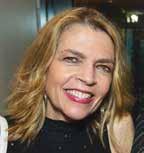
If July 2025 felt a little extra electric, we can thank the women of the WNBA for turning up the voltage—even when some of the brightest stars aren’t suiting up.

of allyship and empowerment of the LGBTQ+ community.
Even better? Friends who aren’t big sports fans are catching the bug. My dear friend, Nikki Wood, Co-publisher of Marin Magazine and Co-owner of 270 Media, went to a recent game after being invited by a client who wanted to bring women together around this powerful new moment in Bay Area sports. Nikki texted me afterwards that she was “in love with the WNBA ... and in love with the Valkyries.” She even wore a Valkyries jersey, sat ten rows behind the court, and soaked it all in. She told me it reminded her of the power of women together—on and off the court. That’s the power of this team; it’s not just about basketball. It’s a movement, and it’s bringing people in.
While headlines have been full of injury updates (yes, we’re all rooting for Caitlin Clark’s speedy return), the league hasn’t missed a beat when it comes to putting on a show. The 2025 WNBA All-Star Game was a masterclass in energy, scoring, and statement-making—from Napheesa Collier’s 36-point MVP performance to Skylar Diggins-Smith’s historic triple-double. And yes, even though Clark couldn’t play, she was still the name on the marquee—literally—as the leader of Team Clark against Team Collier in a weekend that broke records and expectations.
player to represent an expansion team in the All-Star game since 2006.
The moment that stuck with me was when players warmed up in bold “Pay Us What You Owe Us” Tshirts, and fans roared back: “Pay them! Pay them!”


Other new faces making history included our own Golden State Valkyries forward, Kayla Thornton, who made her first career all-star appearance and became the first
It wasn’t just a wage fight; it was a rallying cry for respect—and fans didn’t just show up. They showed their support.
I’ve been soaking it all in, with a steady stream of WNBA content lighting up my feed. And speaking of being front and center...
Let’s Talk Golden State Valkyries
I was at Chase Center on June 27, 2025, when our Bay Area hometown team took on the Chicago Sky. It was the Valkyries Inaugural Pride Night, and you could feel the joy, color, and community radiating through the arena. Fans came decked out in rainbow gear—including me. There were special activations and fan giveaways. My friend, the incredible musician and X Factor season

2 contestant, Jason Brock, opened the night with a moving rendition of the national anthem.

And what a treat at halftime—an unforgettable drag show—just one more way this team is doing things differently and with heart.
The energy and atmosphere were off the charts once again. The crowd was loud and proud, cheering on Kayla Thornton, who dropped a career-high 29 points, including four clutch threes in the second half. Angel Reese battled like every rebound was made of gold, and Tiffany Hayes sealed the deal at the free throw line. Final score: 83–78, Valkyries. I got to see a win!
Every single person in the sold-out arena stayed to the final buzzer, including me. I just can’t get enough of this team and their energy. And the night was a true celebration


Recently, I found myself watching the 2025 ESPY Awards. Held at the Dolby Theatre in Los Angeles, the 33rd annual awards show aired live on ABC and ESPN+ to raise awareness and funds for the V Foundation—continuing its legacy since 1993 from Jim Valvano’s iconic “Don’t Give Up” speech. It’s usually a great night of highlight reels and tearjerking tributes. I’ve been watching for years, but this year felt different: stronger, bolder, more seen. Women’s sports didn’t just show up. They took center stage. It really felt like ESPN was not just honoring achievements, but actively elevating women’s sports through televised representation, award categories, and high-profile influence. My mom would be so proud to finally see women’s sports being integrated into mainstream cultural presentations. Some of the biggest moments:
• Ilona Maher of USA Rugby won Best Breakthrough Athlete.
• Simone Biles earned Best Female Athlete and Best Championship Performance honors for her brilliant comeback.
(continued on page 19)

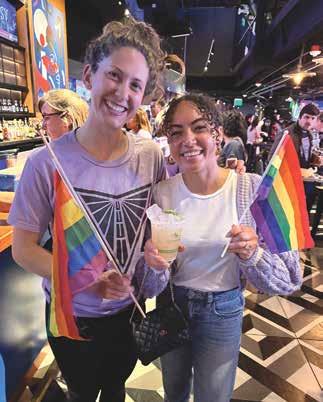
(continued from page 18)
• Caitlin Clark was named Best WNBA Player.
• Legends Diana Taurasi and Alex Morgan received the Icon Award, celebrating their lasting impact on sport and culture.
• Suni Lee won Best Comeback.
• Sloane Stephens won the Muhammad Ali Humanitarian Award.
The whole night felt like a reset—like the sports world was finally reflecting the reality so many of us already see: women’s sports are not an afterthought. They’re the story. The momentum is real, and I can’t wait to see where it will lead next.
Olympic Evolution:
Leadership & LA28 Momentum
After watching the ESPYs, I found myself reflecting on how far women’s sports have come, and how much further we’re poised to go. The next chapter is being written on the Olympic stage.

History recently was made when the International Olympic Committee officially passed the torch—literally and symbolically—to Kirsty Coventry, who was elected as the first-ever female and African President of the IOC. The 41-year-old Olympic gold medalist in swimming from Zimbabwe defeated six male candidates and won the majority in the first round of voting. She now becomes the 10th president of the IOC since its founding in 1894 and will serve an eight-year term.
Coventry’s leadership marks a major turning point for global sport—not just because she broke barriers, but because she steps into the

role with Olympic experience, political savvy, and the diplomatic challenge of guiding a movement that must evolve with the times. She was officially proclaimed president on March 21, 2025.
It’s a powerful symbol of what’s next—with Milano-Cortina 2026, LA28, and Brisbane 2032 all on the horizon.
LA28:
Venues, Events & Paralympic Firsts
And speaking of the Olympics, being here in Venice, Italy, as of this writing for a wedding, I’ve already started spotting signage for Milano-Cortina. Yes, I’m doing a little informal Olympic intel while I’m here!
But it’s the LA28 Summer Games—now just three years away—that have me especially excited. Not just because of the sports, but because of the way Los Angeles is staging the spectacle.
With the three-year countdown underway, LA28 has unveiled its groundbreaking plans:
The Opening Ceremony (July 14, 2028) will be a dual celebration at the historic Memorial Coliseum (hosted in 1932 & 1984—making it the first venue to hold competitions at three Summer Games) and at SoFi Stadium in Inglewood—home of the NFL’s Rams and Chargers, and now an Olympic debutant.
SoFi Stadium will host swimming in the second week. The Closing Ceremony (July 30) will return to the Coliseum.
The Paralympic Games (Aug 15–27, 2028) will debut in LA, with the Opening Ceremony at SoFi, The Closing will be at the Coliseum, and sports like paraclimbing will be joining the lineup.
As for sports returning or debuting on the Olympic side, the lineup is as diverse and dynamic as LA itself.
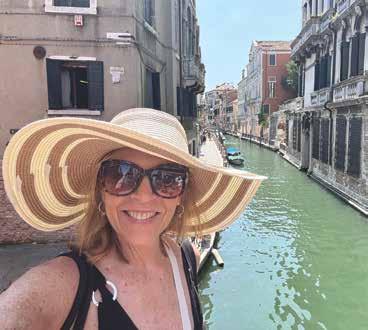
Cricket (T20 format) will make its long-awaited return at the Fairplex in Pomona. It will be a fast-paced, 16-team showdown for both men’s and women’s teams. As someone who fell in love with cricket thanks to Major League Cricket, I’m hoping to score tickets and catch the action in person.
Flag football, squash, lacrosse, and baseball/ softball are all on the program. Flag football will actually be making its Olympic debut, and that will happen at BMO Stadium. Squash, another new addition, will be hosted at Universal Studios.
Beach volleyball will play on the iconic sands of Long Beach.
Taken together, these events represent a thrilling blend of tradition and innovation— and one that reflects the Olympic movement’s expanding reach, both culturally and competitively. More than 5,600 women are expected to compete in LA—marking the first time in Olympic history that female participation will exceed that of men.
And while the WNBA charges toward the playoffs and the Olympic momentum builds, another summer staple is just around the corner: the U.S. Open.
The final Grand Slam of the tennis season will kick off on August 26 in New York on the hardcourt. I’ll be rooting for American Coco Gauff!

From the roar of the crowd at Chase Center to the ripple effects of the ESPYs and the quiet significance of an IOC milestone, this summer has shown us what happens when women’s sports aren’t just celebrated— they’re centered.
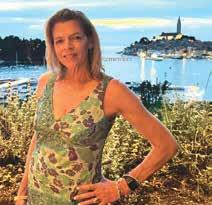
Whether it’s my friends falling in love with the Valkyries, a teenage girl from the Bay winning a national ESPY award, or a cricket stadium in Pomona that will be transformed into an Olympic stage—these moments matter. They connect us. They remind us that sport is more than stats and scores; it’s about visibility, community, and momentum. And right now, the momentum is real.
Signing off from the Bay, where passion meets the play. See you next month!
WNBA https://www.wnba.com/ Golden State Valkyries https://valkyries.wnba.com/ ESPYS https://www.espn.com/espys/ V Foundation https://www.v.org/ IOC https://www.olympics.com/ioc Milano Cortina https://bit.ly/4mhV6fs LA 28 https://la28.org/en.html US Open https://www.usopen.org/
Beth Schnitzer, the former President of WISE (Women in Sports and Events), is the Co-Founder and President of Spritz: https://spritzsf.com/
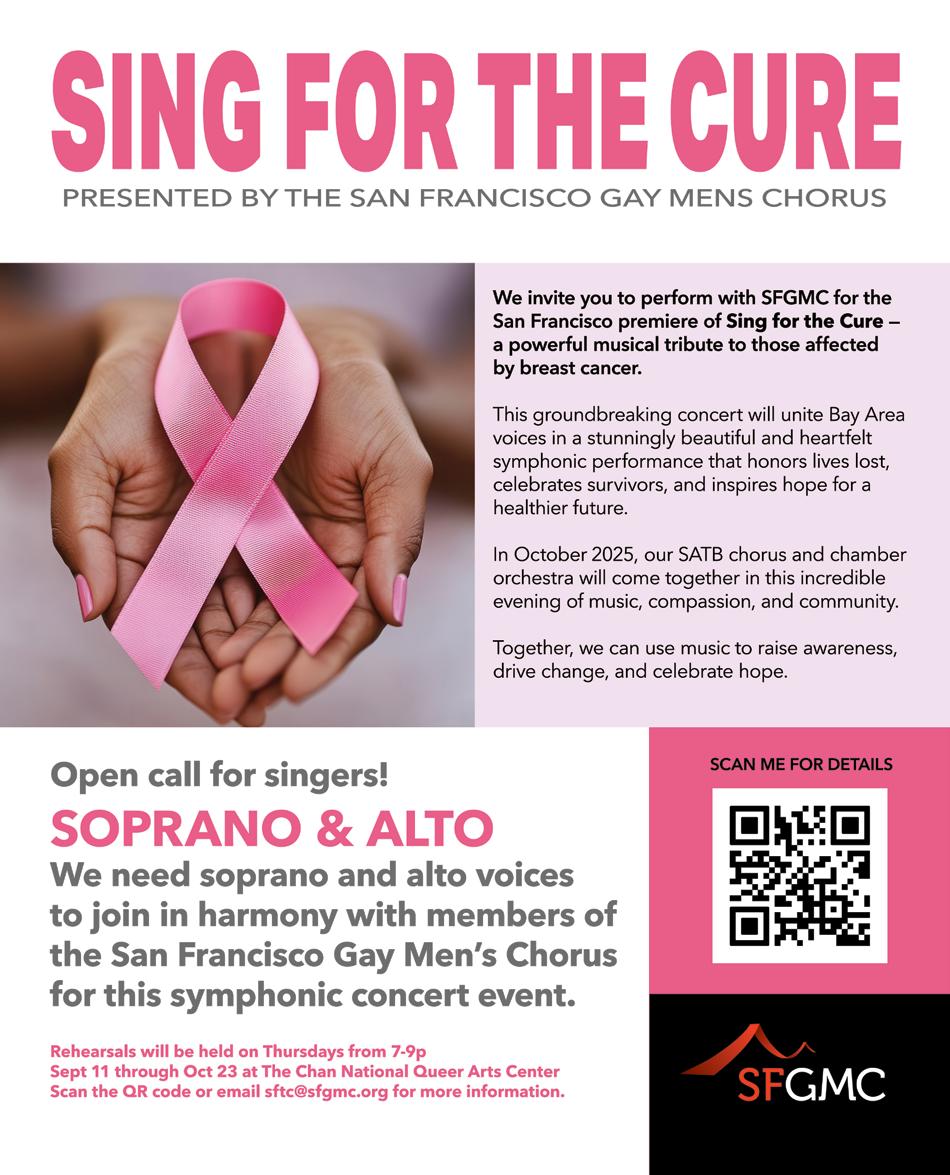

When Jane Wagner’s The Search for Signs of Intelligent Life in the Universe premiered on Broadway in 1985 starring Lily Tomlin, it was a historic moment. The culmination of years of creative collaboration between the writer and actor/comedian (later spouses) was a one-person show, which concludes that “reality is nothing but a collective hunch,” evidence of which can be found on random Post-its.
I saw the show twice in 1985 and then two times more when it returned to Broadway in 2000. I also reviewed the book for a feminist literary journal. I wasn’t stalking Tomlin or Wagner, but rather capturing the experience of two profound, lesbian talents who’d created something unique and ephemeral. Even the filmed version of the show seems to have evaporated in a time when nothing ever disappears.
Fortunately, “The Search” continues, this time featuring icon Marga Gomez at the Aurora Theatre in Berkeley and running
through August 10. A veteran comedian/ monologist, Marga Gomez (unfortunately no relation) is a GLAAD award winner and has been featured on shows such as HBO’s Comic Relief and on television’s Sense8. But she’s most known for her inventive, insightful, funny performances delving into the life of her Puerto Rican family. Her next show, Spanish Stew, will arrive at New Conservatory Theatre Center this October! Marga can embody both her mother and father in an uncanny way that leaves you feeling you’ve really met them.
I’ve watched Marga’s solo performances many times over the past thirty years, but had never seen her do somebody else’s work. Seeing her on the Aurora Stage, I wondered several times, “Why not?!”
Here Marga is Trudy, our travel guide during this journey, as well as the many characters she encounters as she shows around her outer space chums who initiated the search: an angst-ridden teenage girl, the teen’s bewildered grandparents, and three practical and kind sex workers, among others. Finally, a new generation can marvel at the genius of Wagner’s social commentary: “Reality is the leading cause of stress among those in touch with it.” With the political reality threatening to drown us right now, each of Wagner’s aphorisms lands with life-saving relief.
Marga is the actor to deliver these lines right now. Where Lily was ethereal, Marga is earthy. She lands hard in the delusions, if that’s what they are, as if the urgency
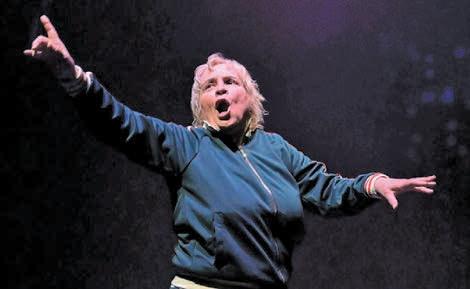

of the search is critical this time around. When Trudy points out the horror to “Mr Nabisco” of trying to sell the concept of snacking to people who are starving, Marga’s delivery reminds us that this exploitative behavior is still being perpetrated around the world.
Marga shepherds both the tragic and comic moments with a surety that allows the audience and the visiting aliens to want to understand how bad things happen to humans and what bad things we do to each other. Even when references might be out of date (such as the mention of G. Gordon Liddy), Marga brilliantly conveys what the reference means—treachery and unkindness—which are both quite current.
In the classic moment when Trudy explains the difference between a can of soup and a painting of a can of soup by Warhol to the space aliens, the complexity of the values of soup and art can still spark crackling discussions. Of all the actors to resurrect this classic work and make it sparkle, Marga, a Puerto Rican lesbian, makes the search more relevant and hysterically funny.
For more information about The Aurora Theatre Company’s production of The Search for Signs of Intelligent Life in the Universe directed by Jennifer King and starring Marga Gomez, go to: https://bit.ly/453QzWN
Jewelle Gomez is a lesbian/feminist activist, novelist, poet, and playwright. She’s written for “The Advocate,” “Ms. Magazine,” “Black Scholar,” “The San Francisco Chronicle,” “The New York Times,” and “The Village Voice.” Follow her on Instagram and Twitter @VampyreVamp

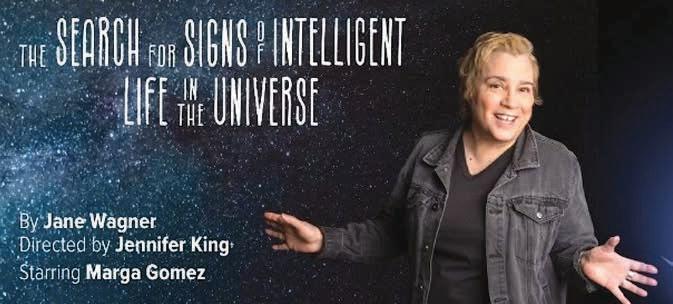



Gary M. Kramer
Writer/actor Charles Busch’s droll and amusing film version of his hit play, Psycho Beach Party, which is celebrating its 25th anniversary this year, is available for streaming on the Criterion Channel starting August 1, 2025. The film is a campy spoof of “Gidget” films and murder movies with plenty of homoeroticism thrown in.
Teenager Florence (Lauren Ambrose) wants to surf with the guys—led by the Great Kanaka (Thomas Gibson)—but they initially make fun of her. However, when she grabs Kanaka’s attention, she is renamed Chicklet and allowed to join them. Unfortunately, their fun in the sun is tainted by a murderer on the loose who is killing anyone who is “different.”
Captain Monica Stark (Busch) investigates, and seems to have it in for Kanaka—her former flame—and his crew. Moreover, when Florence experiences “morbidly psychotic episodes of schizophrenia,” she worries that she may be the killer!
Psycho Beach Party is a hoot that still offers laughs aplenty with its deadpan one-liners, send ups of gender roles, and reverse-projection surfing scenes. Busch spoke with me for the San Francisco Bay Times about his cult classic.
Gary M. Kramer: What do you think about the film now, looking back on
it 25 years later? Do you think it is dated or still timely?
Charles Busch: When [the film] Psycho Beach Party came out, it didn’t catch on. But it found its audience on cable TV ten years later. I find rather frequently that people who were impressionable children watching it on cable have a real affection for it. It found its cult.
Gary M. Kramer: I thought the film held up well. Because it was set in the past, it doesn’t feel dated; it is fixed in time.
Charles Busch: It was a period piece when it was made in 2000. It was supposed to take place in the 1960s so the references were all dated intentionally. I would think it would age well because of the social politics. That it was a real queer movie keeps it contemporary. Movies that are trying to be cutting edge in the time they are living in run the risk of seeming old fashioned after a point.
Gary M. Kramer: Can you talk about adapting it from the stage to the screen? You used to play Chicklet on stage. What other changes were made?
Charles Busch: The play was radically different from the movie. It was a very unambitious stage piece. We did it in a club in the East Village. There was virtually no plot. I never thought of it as a movie. I had a wonderful manager, Jeff Melnick, who insisting it could be a movie. He took Bob King [the director] on as a client. Bob had a short film released by Strand and Strand was interested in doing a feature with Bob. Jeff put Bob and I together to make the movie.
I was lucky because Bob was an excellent screenwriter. There was no killer on the loose at all [in the play]. Bob had a real fondness for 1970s slasher films, which I wasn’t familiar with at all. He thought we should widen the scope of the parody,
(continued on page 23)
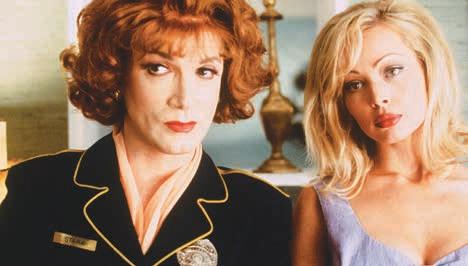
beyond the 1960s beach movies. Adding the killer solved several problems. It gave the movie some plot and suspense. But it also solved the problem of what to do with me— because Bob and the producers wanted me in the movie, but it didn’t seem right to any of us that I should play my old part of a 16-year-old girl when I was well into my 40s.

We didn’t want it to be that stylized. We wanted it to be realistically cast. If there is a killer on the loose, there has to be a detective. My stage persona is one half Susan Hayward, and she would be a good movie detective. I preferred that part to Chicklet, who was never a favorite role of mine. It didn’t go with what I do best. I was glad to move into something more in my stage persona.
Gary M. Kramer: What about the different types of comedy in the film? There are sight gags, wordplay (Kanaka talks in rhymes), satire, spoofs, parody, and lampoon, and it is all very campy.
Charles Busch: It’s all comedy, honey. I enjoy the language of it—the beatnik and surfer talk. It was fun to invent my own lingo, so they are all talking in an almost foreign language at times.
Gary M. Kramer: Can you talk about the film’s tone, since it is a genre mash-up?
Charles Busch: That is all my trademark style, that melding of tone. You want to make sure that it creates its own tone and does not suddenly do something so left field that you don’t know what movie you are in. Some of the tones are bigger than life, but you have to have a truly emotional core. As outrageous as it is, there is some real emotional throughline to it. It is not all just, “Aren’t we zany?” My other plays go further in that direction. We’re dealing with a girl and her severe problems here. It is on a stylized level, but most of us can identify with this exploration of who exactly am I, even in a high camp way.
Gary M. Kramer: The film is really funny in how it plays with gender roles. Can you talk about playing with gender stereotypes?
Charles Busch: It was interesting taking that period of the early 1960s where gender roles were so fixed that that would be fun to play with, because gender roles never really were all that fixed. There were always things being done behind closed doors. Guys who were passing as straight were having gay sex. Sometimes it is so apparent that no one wants to admit that they are seeing it. Those things were there,
but in this comic take, we are underlining them. In a 1960s movie, they would never dare express it.
Gary M. Kramer: What about the queer coding? It’s covert, and yet it is also overt with the “people who are different” theme.
Charles Busch: That’s the theme of the movie, that gay boys have to deal with feeling they are different somehow. It’s rather simplistic since it’s a spoof of gender confusion. They immediately figure out they are in love, and they become gay activists. But there is also the whole thing with the killer who is targeting people who are different— whether they have a physical variation or gender identification. There was a movie in the 1940s called The Spiral Staircase, and I took that element from there.
Gary M. Kramer: Psycho Beach Party was the first adaptation of your work on screen. How does it fit into your oeuvre overall?
Charles Busch: This film gave me opportunities to have other film versions of my plays. I was appearing in the stage version of Die, Mommie, Die! while I was shooting Psycho Beach Party in Los Angeles. While I was doing the play, some producers saw it and wanted to do a movie. I enjoyed making Psycho Beach Party, but I played a supporting role in an ensemble film. Die, Mommie, Die! was my vehicle—it was like a Bette Davis movie. As an actor, I loved being the star of it.
The other movies I made were all original, most recently, The Sixth Reel, which barely got released. Most queer theater-makers don’t get to be immortalized on film. Their work is so lost. I’m thinking of Charles Ludlum, who is my great inspiration. I feel lucky I got to do my “trip,” as I call it, and those movies are out there.
© 2025 Gary M. Kramer
Gary M. Kramer is the author of “Independent Queer Cinema: Reviews and Interviews,” and the co-editor of “Directory of World Cinema: Argentina.” He teaches Short Attention Span Cinema at the Bryn Mawr Film Institute and is the moderator for Cinema Salon, a weekly film discussion group. Follow him on X @garymkramer
Each year, hundreds of volunteers work with Frameline staff on the popular annual festival. Frameline49 was no exception and for 11 days, filmgoers enjoyed 120 screenings held in multiple theaters. The annual Volunteer Appreciation Party, held this year on Monday, July 14, provided a chance thank and celebrate those who have helped make it possible through their contribution of time and resources. Allegra Madsen, Executive Director; Kate Bove, Publicity and Operations Manager; and Programmer Kegan Marling were among the Frameline staff members who joined volunteers to enjoy the evening. at Beaux SF.
by Rink
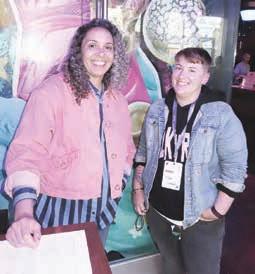
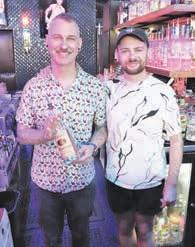
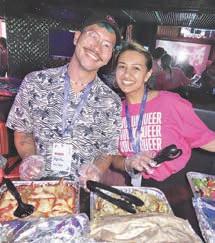
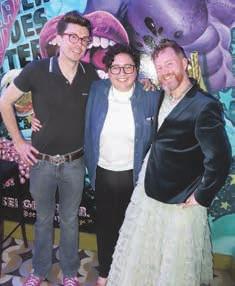

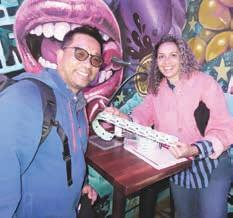
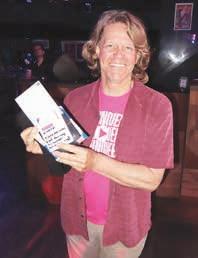

Photos by Rink Opening Night at the San Francisco Jewish Film Festival celebrated the organization’s 45th year presenting a showcase of Jewish-themed cinema in theaters in San Francisco and the East Bay. Held at the Herbst Theatre on Thursday evening, July 17, 2025, Opening Night included a screening of the film Coexistence, My Ass!, with Writer/Producer Rachel Leah Jones, Cinematographer Phillipe Bellaiche, and Executive Producer Libby Lenkinski attending. Following the screening, participants enjoyed the Opening Night Party held in The Green Room at the same location. SFJFF45 continues through August 3.
http://www.sfjff.org
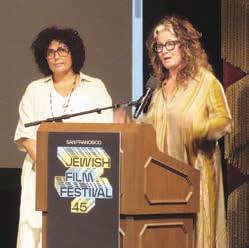
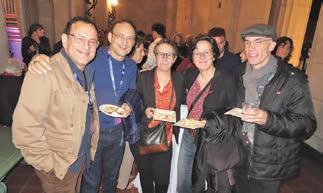
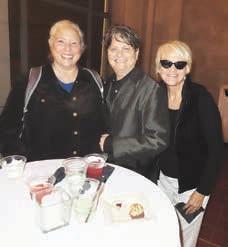
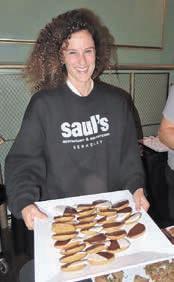
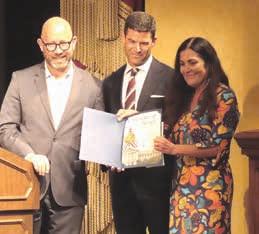
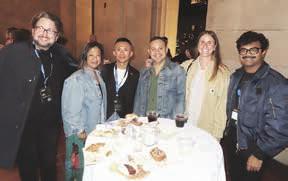
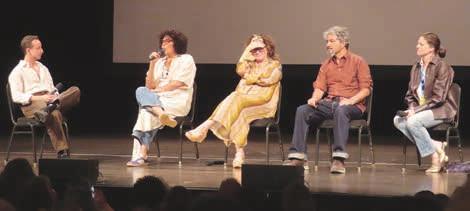


By Sister Dana Van Iquity
Sister Dana sez, “The good news is that Andry Romero has thankfully been released in a recent prisoner swap from El Salvador that was held on July 18, 2025. The bad news is that he is now stuck BACK in dangerous, anti-gay Venezuela!”
Just as a reminder, I will repeat that we SF Sisters of Perpetual Indulgence (SF SPI) had recently sainted Andry José Hernández Romero, who left Venezuela over a year ago to seek a better future in the United States. Andry’s newly SPI SF-sanctified name became Nuestro Sagrado Corazón de las Dos Coronas, which translates to “Our Sacred Heart of the Two Crowns.” More history: On May 23, 2024, this gay-persecuted artist had migrated with the hope of one day opening a beauty salon in the U.S., or making a living from
one of his other passions: design and tailoring. But he, like hundreds of other Venezuelans (last count was 250 wrongfully detained), was kidnapped by ICE, and thrown into a terrifying El Salvador prison—a jail known for anti-LGBTQ violence, torture, and inhumane conditions. Andry had entered the U.S. legally in 2024, fleeing the aforementioned anti-LGBTQ hostility and maltreatment. After showing up for an appointment that the U.S. government had given him, The Terrible Trump administration invoked the Alien Enemies Act of 1798 (previously used to wrongly incarcerate Japanese Americans during World War II) and shipped him off to El Salvador on March 15 this year— even though his attorneys insisted then and now that he has no criminal record. Never.
The positive news is that Andry is now free from the dangerous El Salvador gulag; however, the negative news is that he is NOT returned to the USA—but is back in the dangerously anti-gay Venezuela from which he had fled. Hernández Romero is the current lead plaintiff in a court case challenging the Trump administration’s illegal use of the Alien Enemies Act (AEA). In response to all this news, Immigrant Defenders Law Center decried the U.S. Government’s role in disappearing Venezuelan men under that AEA, celebrated the release of clients, and called for Due Process. Lindsay Toczylowski, President and CEO of Immigrant Defenders
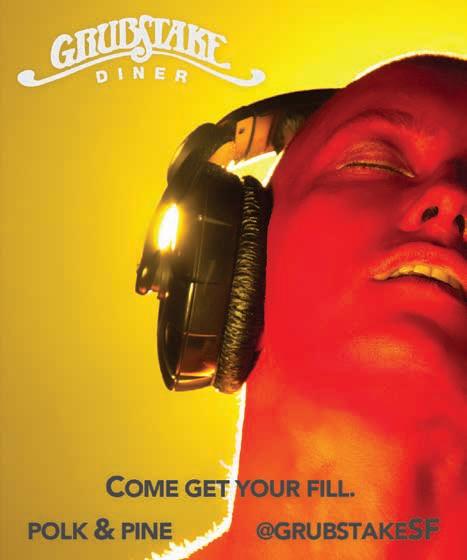
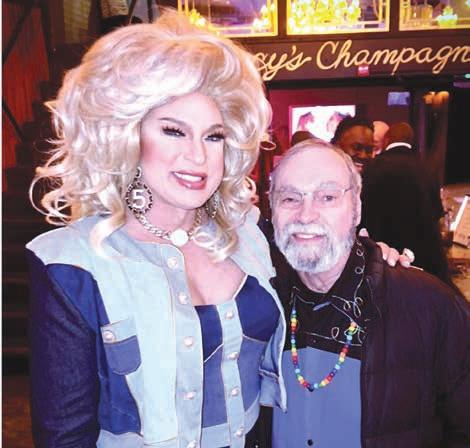
Law Center, stated on July 18: “We have been fighting to free Andry, our other clients, and all the men from CECOT for more than four months. We are incredibly relieved that it appears most of them have been freed from the torture prison the U.S. government sent them to, and potentially may be reunited with family soon. But as an American, and as a lawyer who believes deeply in the rule of law and due process, my heart remains heavy. What happened here is a dangerous travesty of justice. We have long known that the allegations that the men at CECOT were members of a dangerous gang were baseless. We know the Trump administration denied them due process and sent them to a prison notorious for abuse and torture. The Trump administration misled the public and our courts by claiming that the U.S. government was not in control of what happened to the men at CECOT, only to eventually—after 125 days— orchestrate a prisoner swap using human beings as pawns. So, while we are grateful they will not spend another night being tortured in El Salvador, we also grieve the ongoing and lasting damage being done to our democracy by an administration that is willing to violate our Constitution, U.S. asylum laws, and international law. While the Trump administration escalates their use of authoritarian practices meant to intimidate people into submission, we will keep fighting for justice for immigrants and for the future of our country.” Sister Dana sez, “Let’s not rest, and let’s keep up the FIGHT for justice and for the future of our democratic America!”
And now tyrannical Trump’s approval rating among Latino voters is in free-fall, as they realize that nobody is safe from his evil deportation agenda. A recent poll found that Trump is a massive 27 percentage points underwater among Hispanic voters, with 62% disapproving of the job Trump is doing, as opposed to the 35% who approve.
CBS-TV has shockingly announced that in May 2026 it is cancelling “THE LATE SHOW WITH STEPHEN COLBERT ”— just three days after Colbert criticized on-air the recent sixteen-million-dollar settlement between Trump and Paramount Global, CBS’ parent company, when Stephen called that a “big, fat bribe.” This cancellation is deeply suspect: More than two million viewers tune in every night, making it the top-rated late-night show on air. And Colbert has been hosting this show for nearly a decade. This is a moment when we need all institutions—including media companies—to realize their role in resisting the corruption, abuse, and overreach of a federal government (especially this fascist one under Trump & Company). Media corporations have a duty to support independent voices without government interference. Unfortunately, that’s not what we’re seeing right now. Members of Congress, including Senator Adam Schiff and Senator Elizabeth Warren , have considered whether Colbert’s ongoing (and accurate) criticism of CBS’ settlement with Trump influenced the network’s decision. Meanwhile, monstrously mean-spirited Trump actually celebrated the announcement, stating on Truth Social, “I absolutely love that Colbert got fired.” Sister Dana sez, “I would absolutely LOVE that Colbert continue to entertain and inform us— and I would absolutely LOVE that Trump get fired!”
Then, on July 22, Trump posted and boasted, “ Jimmy Kimmel is next to go in the untalented Late Night Sweepstakes, and shortly thereafter, Fallon will be gone. It’s really good to see them go, and I hope I played a major part in it!” Sister Dana sez, “So I guess Trump is now King of Cancel Culture!” He later said that MSNBC-TV News’ Rachel Maddow and Nicolle Wallace, as well as Comedy Central TV’s Jon Stewart —all three
(continued on page 34)
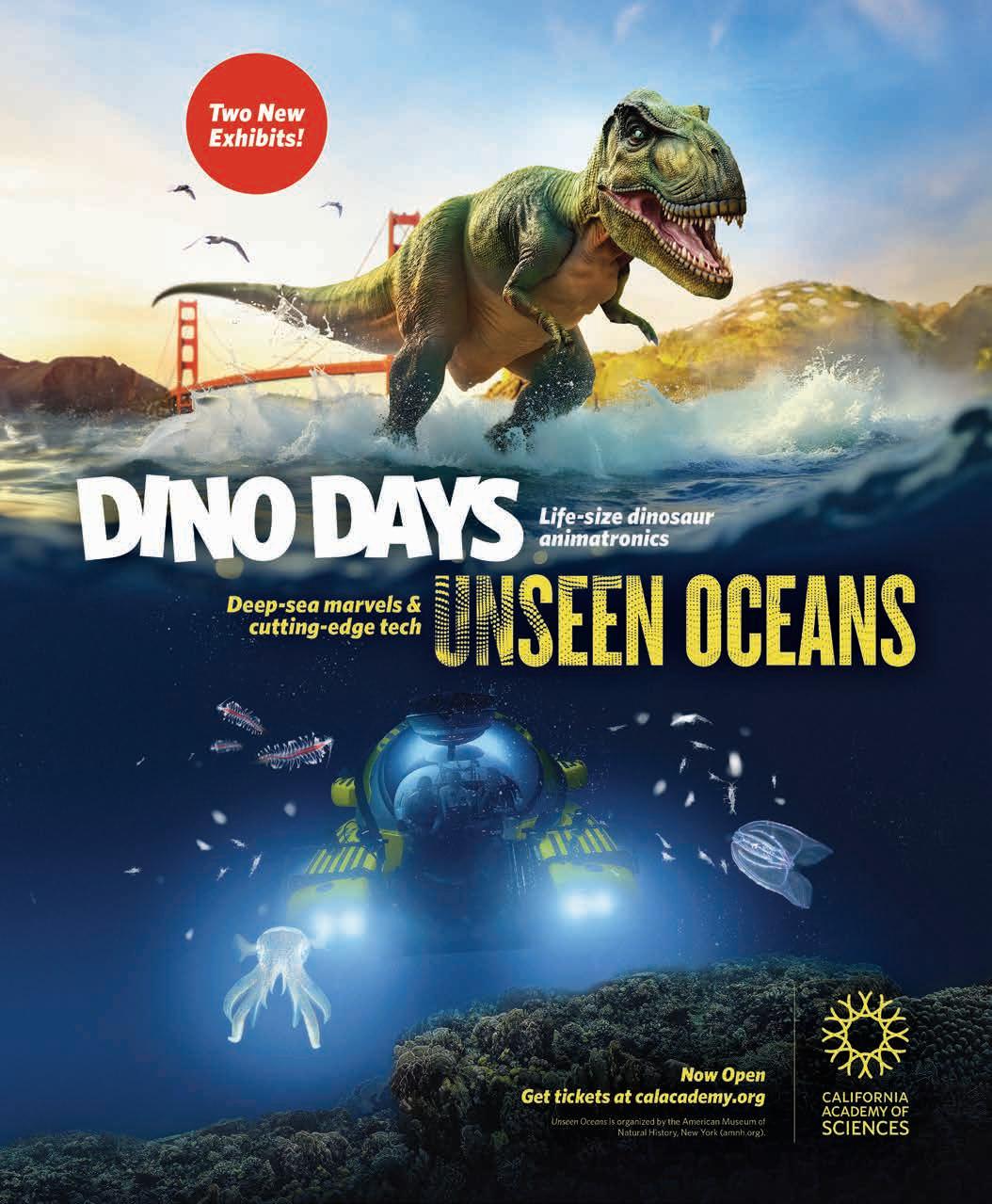
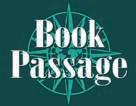


Boustany: A Celebration of Vegetables From My Palestine (non-fiction - hardcover) by Sami Tamimi
Sami Tamimi, Co-founder of Ottolenghi, delivers his first solo cookbook, called Boustany It is filled with hundreds of plant-based and vegetarian recipes, from breads to dinner spreads. The recipes pay homage to Palestinian food and culture.

Maggie; or, A Man and A Woman Walk Into a Bar (fiction - hardcover) by Katie Yee
A Chinese-American woman finds out her husband is cheating on her with a woman named Maggie and that she has breast cancer in this new novel by Katie Yee. Grappling with her new normal, she names her tumor Maggie, begins talking to it, writes a guide to her husband, and starts sharing her Chinese culture with her chil-
dren. This novel is full of wit and humor as a woman deals with grief, heartbreak, and motherhood.

Not Quite Dead Yet (fiction - hardcover) by Holly Jackson
Holly Jackson makes her adult debut with a thrilling mystery, Not Quite Dead
Yet. Jet is attacked on Halloween night, leaving her with a fractured skull that will eventually cause a fatal aneurysm. She could undergo surgery with a 10% chance of survival or do nothing and die within the week. She decides to skip the surgery and use her last week to find her murderer.
(continued on page 34)



Sweet Cupcake and Affectionate Murphy Cupcake
Three-year-old Cupcake has been in a foster home and her fosters give her a great report card:
• She’s as sweet as her name!
• She’s medium energy, an easy walker, and loves playing with toys and taking naps.
• She’s crate trained and sleeps in her crate through the night.
• She’s food motivated and loves to train.
• She knows sit, shake, and is working on “wait!” and roll over.
Murphy


Murphy is an affectionate 10-month-old boy who loves attention. He purrs, makes biscuits, and politely asks for more pets. Mellow and friendly, Murphy has the makings of a great lap cat!
The OAS adoption process focuses on matching you with a pet who is a good fit for you and your family. Come by during open adoption hours Thursdays 12–7 pm and Fridays/Saturdays/Sundays 12–3 pm to adopt your new best friend, or to learn more about the OAS adoption process. Please see the OAS website to learn more about how you can help by adopting, fostering, volunteering, and donating: www.oaklandanimalservices.org


The New Lesbian Pulp edited by Sarah Fonseca and Octavia Saenz Who’s ready for some raunchy fun? The New Lesbian Pulp offers something for all the sapphically inclined: from lust to murder to kink parties gone awry ... and witches too.
Before Gender: Lost Stories From Trans History, 1850–1950 by
Eli Erlick
This is a lively and well-written deep dive into the forgotten and/or suppressed history of trans people from back in the Olden Days.


Memories That Smell Like Gasoline by David Wojnarowicz
This reissue of Wojnarowicz’s raw, yet lyrically-told, tale of adolescent marginalization, transgressive eroticism, and violence, contains a foreword by the indispensable Ocean Vuong. https://www.fabulosabooks.com/
Clear The Shelters Campaign Allows SF SPCA Visitors to Pay What They Can for Adult Animal Adoptions


The San Francisco SPCA has joined NBCUniversal Local’s 11th annual Clear The Shelters pet adoption and donation campaign during the month of August. Visitors can pay what-you-can for all adult animals at the SF SPCA as part of the nationwide initiative. Throughout the U.S., NBC and Telemundo stations partner with local animal shelters and rescues to promote pet adoption and raise funds that support animal welfare. Since its 2015 inception, Clear The Shelters has helped nearly 1.2 million pets find new homes and has raised more than $5 million for participating shelters and rescues.
“Shelters across California are facing a critical overcrowding crisis, and we’re seeing the ripple effects throughout our state’s animal welfare network,” said Jennifer Scarlett, CEO of the SF SPCA. “Clear The Shelters provides a vital lifeline not just for the animals in our care but for the overwhelmed shelter system statewide. Every adoption we facilitate through this campaign creates space for another animal in desperate need and helps us save more lives throughout the Bay Area.”
Follow Clear The Shelters on social media: X: @ClearTheShelter Instagram: cleartheshelters TikTok: @cleartheshelters Hashtags: #ClearTheShelters & #DesocuparLosAlbergues


Cocktails With Dina by Dina Novarr
San Francisco has long been a city where food meets feeling. We cry over oysters, whisper sweet nothings to our single-origin pour overs, and Instagram our way through $28 “farm-forward” cocktails garnished with herbs that taste like generational trauma.
But this week, our beloved city served up something extra juicy: a full-bodied scandal at a Bay Area cafe, where things recently went from “wine and unwind” to “whine and wound up.”
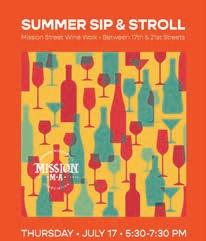
It all began when local TikTok creator @ itskarlabb shared a now-viral storytime video about a brand collaboration gone sour. In the clip (now clocking millions of views and a healthy dose of public outrage), she claimed the chef mocked her for having “only” 15,000 followers.
Within hours, armchair sommeliers across TikTok pounced. Sleuths identified the culprit, dragging the restaurant into the virtual

town square, Yelp reviews in hand, torches lit with digital fury. The reckoning had arrived.
To their credit, the cafe moved quickly. They issued an apology, distanced themselves from the chef, who is now “no longer affiliated,” and they announced a temporary closure to restructure (which, in San Francisco hospitality circles, is the equivalent of retreating into a redwood forest to find yourself).
But the damage had been done. Google reviews plummeted. Instagram comments caught fire. And the influencer quietly gained 150,000 followers.
This is an important reminder: You don’t have to be impressed by TikTok. You don’t even have to know what a ring light is. But if someone walks into your space, you need to treat them like a human being—not a spreadsheet column or a punchline.
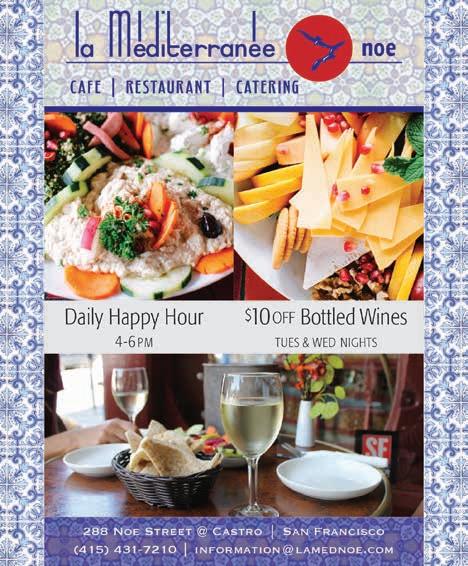
Follower numbers may control the volume, but they aren’t your voice.
Case in point, recently I had an incredible collaboration with Andrew de los Santos (@andrewtourssf) and two curated communities: SF Social (@sf.socialclub) and Venn. Social (@app.venn). I came to the table with no social media presence. Zero followers, zero clout, zero blue checkmarks. But what I did have was something to collaborate on (the first ever wine walk in the Mission: https://bit.ly/3U3CVxU ) and the wisdom to partner with voices that could help.
This is influence through intention, not metrics. While the chef was busy counting @itskarlabb’s followers, they missed the deeper truth about how modern influence actually works: it’s not about the size of your megaphone; it’s about the quality of your message and the authenticity of your partnerships. With our combined efforts, the wine walk ended up surpassing expectations and hopefully created a template we can follow for years to come.
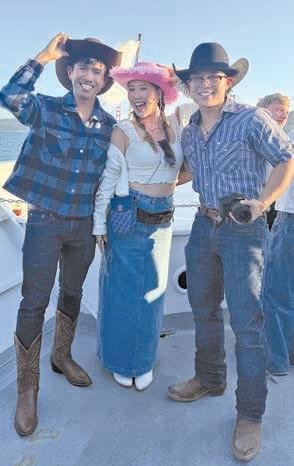
Long Island Viral Tea
Andrew and the communities he works with understand something that traditional gatekeepers don’t—that influence isn’t a zero-sum game. When you elevate others, you create space for voices that resonate. When you focus on connection over collecting likes, you create something more powerful than any single viral moment.
The magic happens in the space between the followers. It’s in the trust of SF Social, Venn.Social, and similar curated communities that collectively mobilize people and amplify their voices. It’s in the ability to see potential beyond metrics. It’s in understanding that sometimes the most impactful collaborations come from people who know exactly what they don’t know and aren’t afraid to let others shine.
The real story here is that influence isn’t just about reach; it’s about resonance. Whether you’re @itskarlabb with a devoted community, or someone like me with zero social media presence, the power lies in understanding that authentic voices find their way to the right ears. And authentic voices create influence regardless of likes.
Here is a drink I am making to cheer on influencers who choose authenticity and collaboration and uplift the community:
San Francisco-based Dina Novarr enjoys sharing her passion for fine wines, spirits, non-alcoholic craft beverages, and more with others.
½ ounce vodka (Meili Vodka because we all have been under the influence of Jason Momoa)
½ ounce gin (Distillery No. 209 Gin to keep it SF)
½ ounce white rum (The Real McCoy 3 Year Rum because it is the best even though it doesn’t have clout)
½ ounce tequila (Don Fulano, which somewhat translates into “John Doe.” It is 100% antiinfluencer and authentic in that it represents everyman rather than a celebrity.)
½ ounce triple sec (or orange liqueur)
½ ounce simple syrup
½ ounce lemon juice (freshly squeezed is best)
cola, to top (about 1–2 ounces or to taste)
lemon wedge or slice, for garnish
Fill a tall glass (like a highball or Collins glass) with ice. Add the vodka, gin, rum, tequila, triple sec, simple syrup, and lemon juice to the glass. Give the ingredients a gentle stir to combine them. Top with a splash of cola (or more, to taste). Garnish with a lemon wedge or slice. Serve immediately and enjoy its influence.
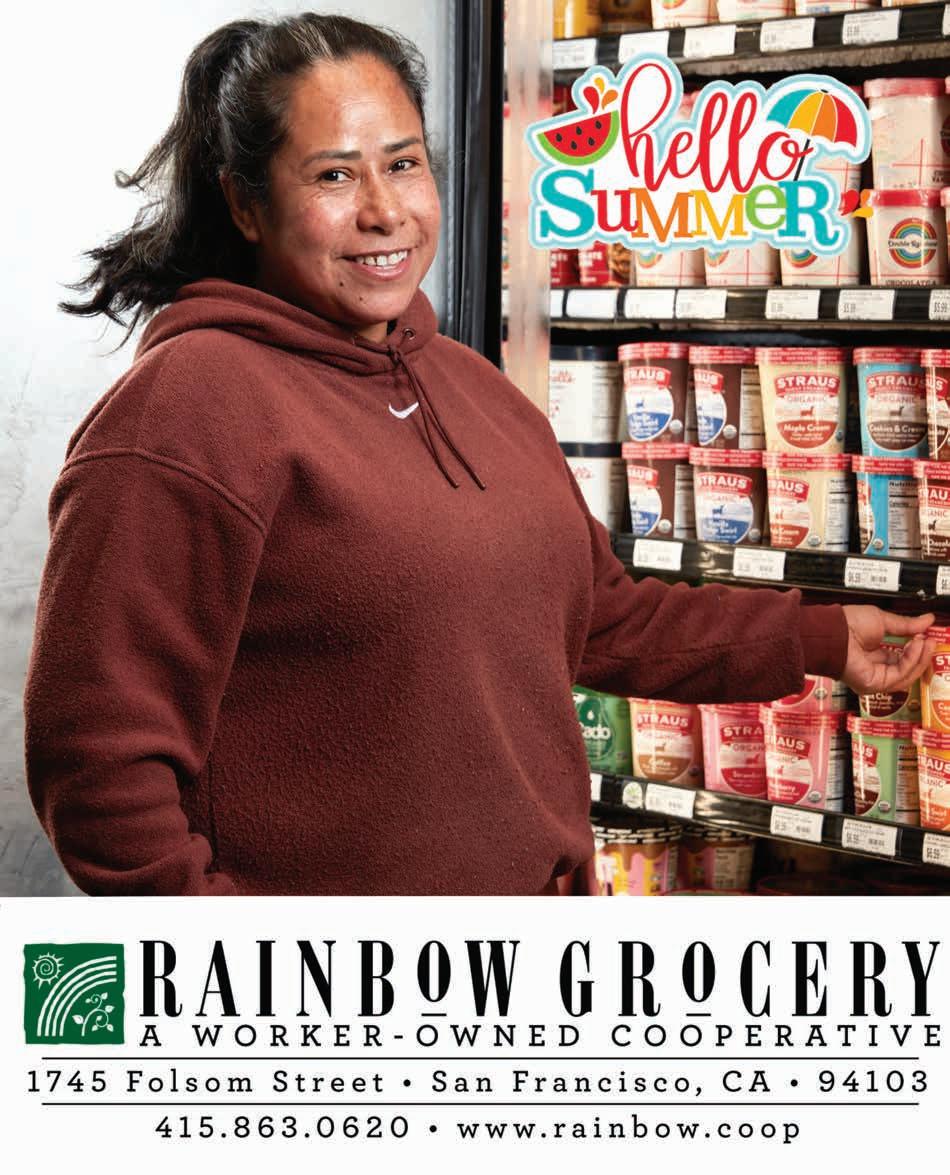
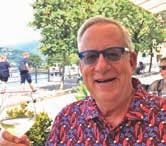
David Landis
San Francisco has a long and rich history, dating back centuries. From the Miwok Native Americans, through the Gold Rush, to the Beatniks, the Hippie movement, the Queer invasion, and the tech revolution, this urban enclave is constantly innovating. It’s such a profuse timeline that sometimes, even though I’ve lived here since 1980, I discover something radically new about this city or a neighborhood I thought I knew.
That’s the “ah, ha” moment I had recently. Two tourist friends from Germany and I walked the Mission with

knowledgeable tour guide Robert Magee from the organization Stretchy Pants Food Tours (SPFT). What did we find? A diverse array of food, art, and—surprisingly for me—a consistent history as a center of social justice.
First, a bit about this tour group. Stretchy Pants Food Tours, according to its website, “was founded by food enthusiast Kara Ricciardi in San Francisco, and emerged from her love of cooking, exploring new foods, and traveling. Kara started as a prep cook and waitress, later specializing in bakery science and developing cookies for various food service providers. Inspired by her travels to over 65 countries, Kara combined her passions for food and travel to create Stretchy Pants. Ruby Bielik, Kara’s college friend, joined the venture because she was drawn to the importance of food in culture. Stretchy Pants Food Tours promotes exploring local cuisines and connecting with communities, reflecting a belief in the significance of food to understand a city’s essence.” They offer public tours (North Beach, Fisherman’s Wharf, and Chinatown), and private tours (North Beach, Castro/Mission, Ferry Building, Alamo Square/Painted Ladies, and Pier 39) throughout town.
I chose to experience the Mission private tour because it combined food, art, and history. I felt like I had a grasp on the history of the Mission and its psychic heart. Boy, was I wrong. We met Robert at Taqueria Cancún for one of the city’s tastiest tacos (moist chicken, no less!) amidst a comforting array of picnic tables in a bright, cheery yellow dining room.
At the start of the tour, Robert educated us about the neighborhood’s longstanding history (in his own words) as “a cultural faultline” and a “hotbed of rebellion against the establishment.”
“Even before the Mission became a living tableau for muralists and street artists,” Robert explained, “it stood as a bastion of anti-establishment thought, championing messages of social justice, even revolution.
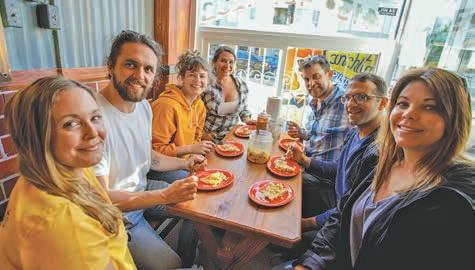
Irish nationalists found fertile ground in the neighborhood taverns, and 16th Street saw the establishment of the American Indian Center in the late 1950s. In the 1970s, young Nicaraguans trained for guerrilla warfare on the slopes of Bernal, and the Gay Latino Alliance (GALA) arose in reaction to what was perceived as the white establishment of the Castro. Plus, it was here in 1971 that a group of visionary women founded the San Francisco Women’s Centers, incubating impactful projects for women throughout the Bay Area.”
So, we set off from active Mission Street, turning right to quieter 19th Street. Across the street from famed Michelin-star eatery Lazy Bear, we saw one of the highlights of the tour: a huge black and white mural created by muralist and tattoo artist Mel Waters. It depicts Grammy-award winning musician Carlos Santana, who moved to San Francisco in the 1960s. Just down the street on the same side is an impressive Vamos Gigantes San Francisco Giants mural, created under the direction of artist Susan Kelk Cervantes and commissioned by Precita Eyes. According to Yelp reviewer Al, “The mural’s concept is history, community, and the future. It features the stadiums where the Giants played: the polo grounds, Seals Stadium, earthquake-damaged Candlestick Park, and Pac Bell Park, now known as Oracle Park. Iconic Giants players featured include Juan Marichal, Orlando Cepeda, Willie McCovey, Willie Mays, Barry Bonds, Will Clark, and The Alou Brothers.”

Mission Pool and Playground (the site of the city’s only outdoor swimming pool). A tranquil mural by artist Juana Alicia adorns the outside of the building depicting Adam and Eve, but in an unexpected setting with flora and fauna native to Northern California.

Sauntering further down the street is the
Turning right on Lapidge Street, we approach the impressive Women’s Building from the side and are witness to the colorful, five-story MaestraPeace (Woman of Peace) mural, one of San Francisco’s largest and best-known murals. This mural, which wraps around the building onto 18th Street, was painted in 1994 by a “Who’s Who” of Bay Area muralists: Juana Alicia, Miranda Bergman, Edythe Boone, Susan Kelk Cervantes, Meera Desai, Yvonne Littleton, and Irene Perez. The Women’s Building says, “MaestraPeace serves as a visual testament to the courageous contributions of women through time and around the world,” including Georgia O’Keefe and Audre Lorde.
Wandering quickly by the new and old Mission Dolores (the oldest building in San
Francisco), we were feeling a bit peckish. So, it was time for our second food stop at the much-touted Joyride Pizza on Valencia Street, home to fashionable Detroit-style pizza. While it isn’t necessarily my favorite pizza style, the focaccia-like crust and vegetarian toppings in the cleverly-titled “Eat Your Vegetables” pizza made for a tasty snack. From there, we stopped in at Manny’s, the community center dedicated to social justice and participation in civic life. The café is a welcoming spot to get a perk-me-up espresso, along with sandwiches, salads, and more. Don’t forget to check out its always-changing schedule featuring politicians, artists, and issues-oriented experts.
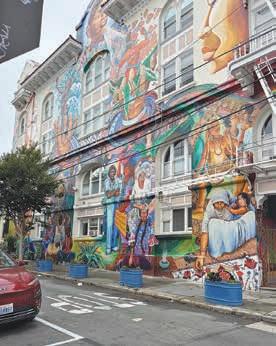
Next on the trail is the awe-inspiring Clarion Alley, where murals dominate an impressive oneblock long alley and you truly “feel” the Mission. The mission (no pun intended) of the Clarion Alley Mural Project (CAMP), in its own words, “is to support and produce socially engaged and aesthetically innovative public art. It uses public art as a means for supporting social, economic, racial, and environmental justice storytelling.” Over 900 murals have been created since 1992, turning this into a must-see Mission destination. The titles of the murals say it all: Hire Trans Folks by Marcel Pardo Ariza, Not in Our Name by Genny Lim and Juana Alicia, and Together, We Can Weather Any Storm by the SF Poster Syndicate, among many others.
We skipped the next food stop, the charming La Oaxaquena (on Mission Street), where pupusas have a starring presence on the menu. But we left room for the final stop, Dandelion Chocolate on Valencia Street. Here, we sampled its famous, thick, hot chocolate,
made from Dandelion’s single-origin dark chocolate, with only two ingredients: cocoa beans and organic sugar. Dandelion’s homemade cookies and brownies were a perfect complement to hit the spot!
I’m told from Stretchy Pants that each tour is individualized, so your tour might have a surprise or two, and feature a different array of destinations.
After touring the Mission with Robert, I’ll admit I could use a new pair of stretchy pants! But I can’t wait to try SPFT’s other San Francisco-based food tours.
Stretchy Pants Food Tours: https://www.stretchy-pants.com/
David Landis, aka “The Gay Gourmet,” is a foodie, a freelance writer, and a retired PR maven. You can email him at: davidlandissf@gmail.com
Or visit him online at: www.gaygourmetsf.com
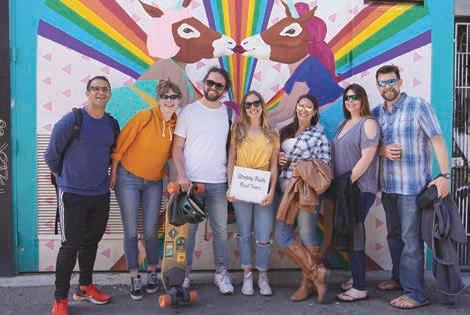
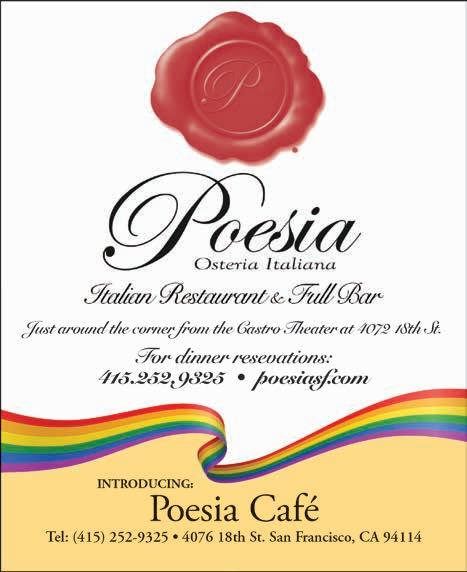
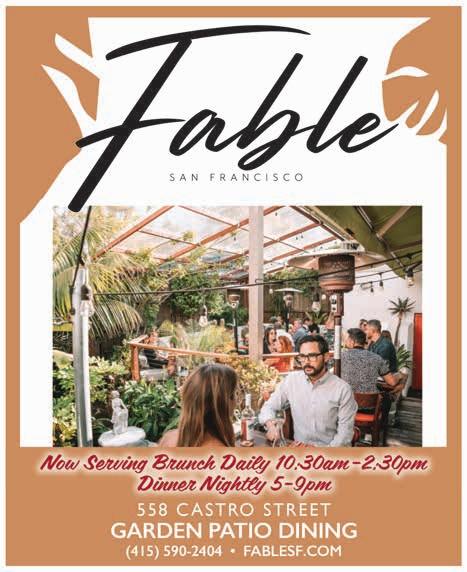
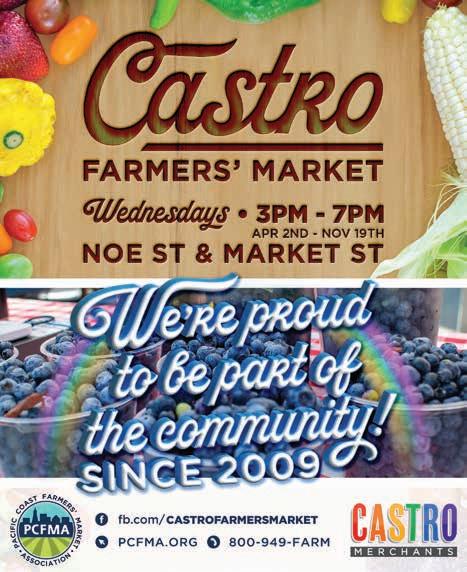
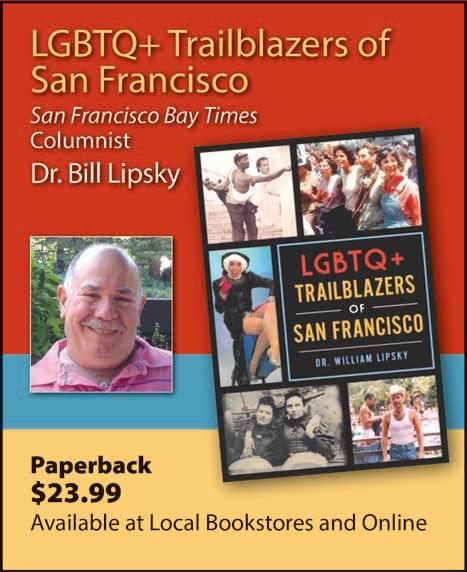
being fierce critics of Trump and his awful administration—should be targeted next.
Regarding Alcatraz in San Francisco, former House Speaker and pro-SF values activist Nancy Pelosi, D-San Francisco, had slammed what she said was a plan for Interior Secretary Doug Burgum and Attorney General Pam Bondi to announce the prison’s reopening. Critics had previously called the idea impossible, saying the facility is “totally inoperable.” “With stiff competition, the planned announcement to reopen Alcatraz as a federal penitentiary is the Trump Administration’s stupidest initiative yet,” Pelosi stated on July 16. “It should concern us all that clearly the only intellectual resources the Administration has drawn upon for this foolish notion are decades-old fictional Hollywood movies.” Meanwhile Burgum & Bondi did visit SF Alcatraz—with Trump soon to visit. They plan to utilize that and Florida’s “Alligator Alcatraz” in at least half a dozen more states with available prisons. Sister Dana sez, “You’d think a convicted felon like dumb Donald would avoid using the term ‘prison’ in any way possible!”
Heartless Trump has now directed federal agencies to find ways to make it easier to forcibly hospitalize homeless people with mental illness and addiction for longer periods—an effort to fight (essentially imprison and not do helpful harm reduction) what his unfeeling administration calls “vagrancy” threatening the streets of American cities. The executive order was issued as the Trump administration has slashed more than $1 billion in COVID-era grants administered by the SUBSTANCE ABUSE AND MENTAL HEALTH SERVICES ADMINISTRATION—and is proposing to lacerate hundreds of millions more in agency grants.
OASIS cabaret, 298 11th Street in SOMA SF, has sadly announced it will close on January 1, 2026, (but happily with a NEW YEAR’S EVE SPECTACULAR ). Not coincidentally, Oasis opened on New Year’s Day 2015. OASIS’ diverse roster of pro -
BOOK PASSAGE (continued from pg 28)
Upcoming Events
gramming includes local and visiting drag stars, cabaret and performing artists, live musical acts, amazing DJs, and more. Oasis owner, Artistic Director, and SF Drag Laureate D’Arcy Drollinger stated in an email to me, “Speaking frankly, the rising cost of operations, paired with declining attendance and sales, have put us in a financial loss for quite some time—and made sustaining Oasis, in its current form, untenable.” But, she added, “However, the spirit of Oasis lives on through [her queer-positive nonprofit organization] OASIS ARTS.”
The OASIS immersive musical parody, “JURRASIQ PARQ ,” is currently running through August 13 at 298 11th Street, as well as other programming that is scheduled into the fall season. And don’t miss the 29th Annual SAN FRANCISCO DRAG KING CONTEST at Oasis on August 3, 7–9:30 pm! Bold, brazen, beautiful, and binary-bashing Drag Kings take center stage to compete and celebrate at the biggest, best, and longest-running Drag King Contest in the World. This year’s timely theme is “No Kings but Drag Kings.” The MCs will be Fudgie Frottage and Sister Roma https://www.sfoasis.com/
DORE “UP YOUR ALLEY” FAIR at SOMA was erotic fun on July 27— but a mere appetizer to the main course that will be served at FOLSOM STREET FAIR on September 28. Sister Dana sez, “Leather forever!”
Epstein Schmepstein! Those sex files are mere distractions from Presi-dunce Trump from all Trump’s many other faults. Never mind that DarnOld Trump (the bragging p#$$y-grabber) had raped more than 19 women, and still got elected the first time; and currently for the second time, after having been felony-convicted 34 times. He might even “like to go for a third term.” Put THAT in your files, folx!
Sister Dana sez, “It is now 6 months since Presi-dence Trump has been in office. So, I think we should bake this King of AmeriKKKa a lovely creamfilled Six-Month Anniversary Cake— and shove it in his face!”
Saturday, August 2 @ 1 pm (non-ticketed - Corte Madera store) Meg Josephson, author of Are You Mad at Me?: How to Stop Focusing on What Others Think and Start Living for You
Social media star and psychotherapist Meg Josephson brings the cure to “people-pleasing” in her new book Are You Mad at Me? Josephson helps readers identify the roles they play in their lives, shed the bad habits, and become a more authentic version of themselves.
Sunday, August 10 @ 2 pm (non- ticketed - SF Ferry Building store) Scott Alan Lucas author of Last Night in San Francisco: Tech’s Lost Promise and the Killing of Bob Lee
Last Night in San Francisco is a true crime exposé about tech icon Bob Lee. Lucas covers his life, his 2023 murder, and the world of the American tech industry. Lucas will be joined in conversation with Kevin Fagan.
Tuesday, August 12 @ 5:30 pm (non-ticketed - SF Ferry Building store) Alexis Soloski, author of Flashout
Flashout is a coming-of-age story about a young woman who leaves college to join an experimental performance troupe. Twenty years later, a private school teacher’s past comes back to haunt her. Soloski will be joined in conversation with Lily Janiak.
https://www.bookpassage.com
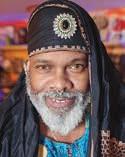
Sir Kippy Marks
“ P ractice M akes L ove E asy” highlights the notion that, over time, the challenges and complexities of human relationships become more manageable; we are all partners in developing a deeper understanding of each other’s needs and desires. As humanity navigates the ups and downs of our universal journey together, we build resilience and find more effective ways to support and care for one another. Through practice, and the mathematics of music,
rights activist Robert Parris Moses and his belief that algebra is the “new civil right.” Michael’s journey began in the halls of Berkeley, where his love of physics, music, and teaching converged during his work with the Summer Bridge Program—a space where he witnessed firsthand how education could transform lives.
Equally inspiring is Michael’s dedication to the San Francisco Pride Band, where he serves as Artistic Director of the Marching and Pep Bands. Since first joining the ensemble as a teenager in 1998, Michael has used music as a powerful vehicle for visibility, self-love, and community cohesion. Under his direction, musicians of all levels find confidence and purpose in sound, and audiences discover joy in shared celebration. Drawing inspiration from Band founder Jon Sims and former Artistic Director Jadine Louie, Michael treats every performance as an act of love—fostering unity, honoring authenticity, and lifting spirits across San Francisco and beyond. Through
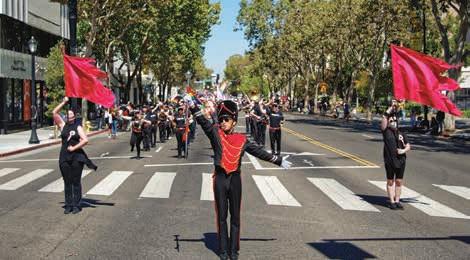
we learn to navigate conflicts with grace, we celebrate each other’s successes, and we cherish the moments of humanity and connections.
It is like any ensemble. In essence, the phrase encapsulates the belief that love becomes more fulfilling and effortless when all people are committed to continually nurturing and growing human relationships. It is my honor to celebrate, and recognize an individual who practices love through equations and ensembles. Our sixth PMLE recognition champion is Michael J. Wong.
He is a passionate educator, musical director, and activist who exemplifies the spirit of PMLE in both the classroom and the concert hall. As Co-director of the Mathematics and Statistics Program at UC Berkeley’s Student Learning Center, Michael has spent more than 20 years championing mathematics as a pathway to empowerment, especially for students from historically marginalized communities.
He sees math, not just as numbers, but as a language for self-expression and a tool for social justice, guided by the legacy of civil
have been serving as the Artistic Director for the Marching and Pep Bands since 2016.
Kippy Marks: Who or what motivated you to become the community activist and music director you are today?
Michael J. Wong: Even though I never met Jon Sims, his legacy as the Band’s founder taught me how music can be a type of activism. His “Message of Music” encapsulated by his re-written lyrics to “If My Friends Could See Me Now” inspired me to use music as a radical statement of visibility and power for the LGBTQ+ community. One excerpt in particular encapsulates this notion: “I’d like for all the folks to see for a fact/That we’re a source of power they’ll never take back/The closet’s empty now, just like it ought to be/The time is right for us, just look around and see/What a set-up, holy cow!/They’d never believe it if my friends could see me now!” More directly, when I joined the Band in 1998, the artistic director of the Band at the time, Jadine Louie, inspired me to embrace music as empowerment for everyone of all levels, as a way to practice self-love and build community through music.
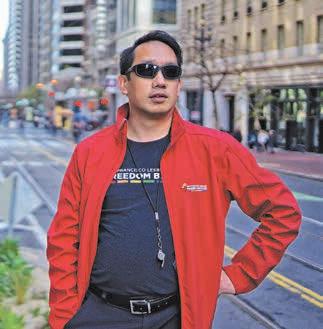
in K–12 education prevented many from being able to achieve their goals. I began to view mathematics education as social justice when I learned how civil rights activist Robert Parris Moses shifted from his earlier work of voter education and registration to calling algebra the “new civil right.” This was further cemented by working over most of my career with the great Cara Stanley, who just last month retired as the Executive Director of the Student Learning Center and who continues to inspire me to use mathematics education as empowerment for members of marginalized communities.
both melody and mathematics, Michael lives the philosophy of PMLE: amplifying voices, cultivating passion, and practicing love boldly and brilliantly.
Kippy Marks: How does love manifest through your work as both an educator and artistic director?
Michael J. Wong: I’m fortunate to have two positions where I have the privilege of practicing love every moment of the work. By day, I am Co-director of the Mathematics and Statistics Program at UC Berkeley’s Student Learning Center, where I have been approaching math education as social justice for over 20 years. But the one most appropriate to this column is my role as Artistic Director of the Marching and Pep Bands for the San Francisco Pride Band (formerly the San Francisco Lesbian/Gay Freedom Band), where I inspire musicians of all experience levels to use music to unite communities, and to promote visibility of the LGBTQ+ community. Music speaks to everyone, and by engaging in music, whether as a performer or as an appreciative audience member, we forge authentic connections and shared community. I joined the Band as a teenager in 1998 and
As for my work in mathematics education, I first came to realize how mathematics is empowerment when I was studying physics and music at UC Berkeley. I was fortunate to be able to work for the Summer Bridge Program, where I was able to teach math to incoming first-generation college students who came from marginalized communities and under-resourced schools. It was there that I realized that understanding mathematics was the gateway to so many scientific fields, and how systemic inequalities
Kippy Marks: How old were you when you decided to focus on both math and music?
Michael J. Wong: I started on both of these paths as a teenager, as a member of the Band in 1998, and when I taught my first class at UC Berkeley in 1997.
Kippy Marks: What advice would you give to others on how to practice love on the daily?
(continued on page 36)
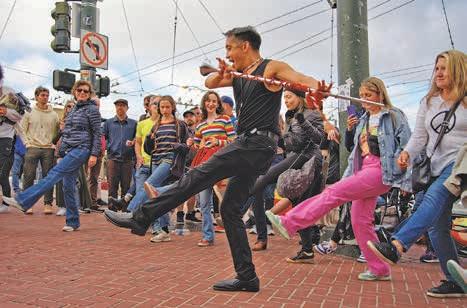


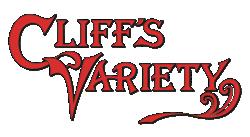

Frank Green Water Bottle
This is the reusable bottle on everyone’s lips, and for good reason. The signature 34oz/1L ceramic reusable bottle is triple-wall vacuum insulated to retain temperature for hours. Plus, the ceramic lining ensures your water tastes like water (no metallic flavors here). Customize the lid type, mix and match colors and add a monogram to make this customer favorite uniquely yours. $39.99–$52.99
Portable Telescoping Stool
Bring your own seat with this amazing compact portable telescoping stool with a weight capacity of 285 pounds. Available in assorted colors. $24.99..

Keep up with Cliff’s Variety news at Facebook ( https://www.facebook.com/CliffsVariety ) and Instagram @hilario_sf
Michael J. Wong: Whether it is with math or music, the best piece of advice I would give is to find your own voice, and know that your voice matters and is important. That is the first part of practicing love—learning to love yourself. As a musician— and, yes, everyone is a musician, even if that only manifests as singing by yourself in the shower—that means knowing that you’re always good enough, as long as you engage with music with passion. This could be listening to that artist whom no one else ever heard of, and not caring because their music speaks to your soul. Or it could mean finding that one song (Dr. Dee Spencer says everyone has their song, and I agree!) that you just can’t resist singing along to whenever you hear it. And then share it! Share that music with your community, and also listen without judgment to the musical gifts others share with you!
As for mathematics, so many students see mathematics as something someone else does; they approach math classes as boring classes where you just reproduce what your math teachers tell you to do, and to think how they think. But once you realize that math is a study of ideas, and that learning math is actually learning how to express your ideas in the language of mathematics, then it becomes so much more empowering and also much more fun to learn!
Kippy Marks: If you were granted two universal wishes, what would you wish for?
Michael J. Wong: My first wish would be for everyone to have the time and resources to locate and explore their authentic passions. The second would be for everyone to be able to share those passions with the rest of the world freely and without judgment. What a better place this world would be if we all were able to spend the precious time we have on this Earth doing something that we
love, and we were able to co-promote those passions with those who share it, and share these passions to those yet to discover them.
Kippy Marks: Please share any current practices that our readers may find useful, and where we can find and see you.
Michael J. Wong: Practicing love begins with practicing self-love. You cannot truly love others until you learn to love yourself. That means that you need to accept who you are and what special magic that you bring to this world, and not compare yourself to others, which I know is a difficult task and is something I’m constantly reminding myself to do. This doesn’t mean that you don’t try to improve yourself, but rather that you see how you can learn and grow, and find ways to pursue that growth, which is itself an act of love. Surround yourself with people who support you in practicing this selflove, and, in turn, spend your external energy supporting others to do the same.
To join the San Francisco Pride Band Marching and Pep Band, visit https://bit.ly/4lYEKbW
We perform 35+ times throughout the year in community and civic performances large and small. On most Thursday nights, you can join me at Dee’s Keys, where Dr. Dee Spencer transforms Beaux into an open-mic piano bar from 4:30 pm to 8:30 pm.
Sir Kippy Marks is a spirited solo entertainer whose shows are permeated with an infectious joy. His distinctive sound arises from his heart, through his 1822 violin consort, Izabella. Marks’ rare talent, broad smile, and radiant warmth will brighten any event to create lasting impact. He is also Grand Duke XL of The Grand Ducal Council of San Francisco. He is the first ever elected African-American Grand Duke.

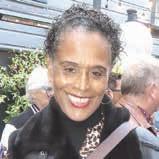
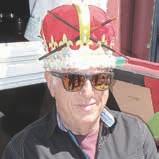
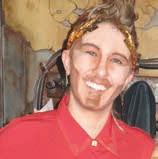
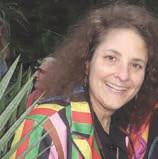
By Antonio Perez of FITNESS SF
For better pull-ups, engage your shoulder blades by pulling them down and back before you start the movement. This activates your back muscles and protects your shoulders.

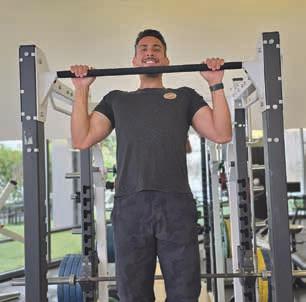
Troy Macfarland at FITNESS SF shares monthly tips that he has learned from colleagues, fellow professional trainers, and more. For additional information: https://fitnesssf.com/

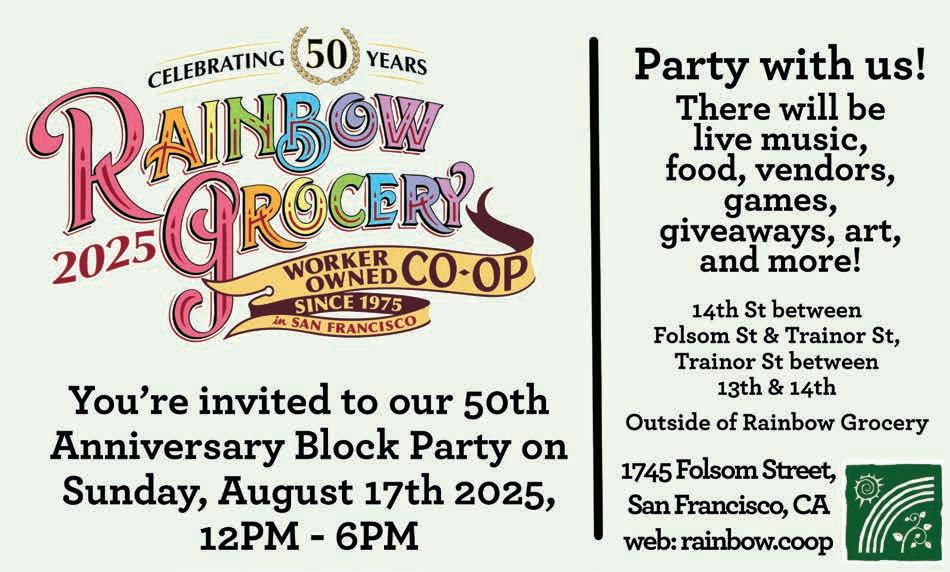
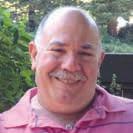
According to the distinguished Renaissance humanist and scholar Girolamo Cardano (1501–1576), “Jàcopo Bonfàdio (c. 1508–1550), a man otherwise not in the last place among the erudite, because of copulation with boys (a most vile and sordid thing), was beheaded in prison and publicly burned. The French Dominique Phinot (c. 1510–1556), a distinguished musician, was also killed in the same way for a very similar folly.” So ended the lives of two of the most famous and influential individuals of their time.
Bonfàdio’s résumé was indeed impressive. Born near Lake Garda and educated in Verona and Padua, he worked as a secretary and tutor for a number of prominent families in Naples and Rome, including the son of Cardinal Pietro Bembo, whose father, a devout humanist and former lover of Lucrezia Borgia, wrote about achieving Christian perfection through the development of human virtue. In 1544, he left to teach philosophy at the University of Genoa, where he was commissioned to write a history of the Republic since 1528.
The commission was his downfall. His masterwork, Annales Genuendis, infuriated Genoa’s most powerful families, who did not appreciate his daring both to chronicle
and criticize their actions. They vowed revenge. Bonfàdio was accused of sodomy “with a wellborn boy,” tried, convicted of “unnatural acts,” and condemned to death. After he was beheaded, his body was burned at the stake, a hugely disgraceful public action at a time when Genoese laws punished by fire only witchcraft, heresy, and homosexuality. The minutes of his trial were disappeared.
Bonfàdio’s writings were widely influential during his lifetime, but his greatest enduring contribution to humanity was his concept of una terza natura, a place “where human artistry and natural elements intertwine to create a unique aesthetic experience.” This concept was first exemplified in the great formal gardens of Renaissance Italy, and is now found worldwide. He envisioned geometric, ordered landscapes, with everything working in harmony to promote reverie and meditation. His name may not be widely remembered, but in these gifts to the soul, his legacy and influence endure.
We know very little about the life of Dominique Phinot. Widely celebrated in his own age of faith and deeply underappreciated in our secular time, he wrote two Masses, four Magnificats, dozens of popular songs, motets, and much more. Renowned as a master of polyphony, an honor he shared with his contemporary Nicolas Gombert (c. 1495–1560), he made major contributions to the development of the 8-voice double-choir technique. Writing in 1556, German organist and early music theorist Hermann Finck (1527–1558) described him as one of the “most distinguished, excellent, and subtle composers.”
Except for the single line about him in Cardano’s extensive opus, we would have no information at all about Phinot’s fate. Based upon the account he published in 1561, scholars believe that he suffered for his passions sometime between 1557–1560. We do not know who accused him or where or how he met his fate. We only know that neither his reputation nor his influential friends could save him. Fortunately, his music has survived the eddies of time.

Gombert barely escaped his colleague’s ill-fortune for the same “moral lapse.” Possibly the most influential composer of his day, he became magister puerorum (teacher of children) at the court chapel of Holy Roman Emperor Charles V (1500–1558) in 1529. He remained in that position until sometime between 1538 and 1540, when, according to Cardano, he was “condemned to the triremes for violation of a young man in the emperor’s service.”
Cardano believed the penalty “was not a hard one, for he endured a punishment he deserved.”

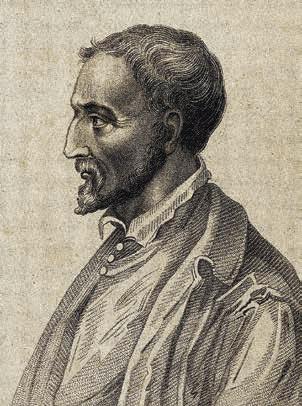
History does not remember how Gombert, a galley slave sentenced to spend the rest of his life in chains, was able to continue writing music or how his new compositions reached the ear of the Emperor. Sometime between 1547 and 1552, however, His Imperial Highness, “patron of all illustrious men,” was so moved by what Cardano described as Gombert’s Swan Songs that he “released him from the forced labor of the galleys.” He “also received a priest’s benefice, so that he spent the remainder of his life in tranquility.”
Ironically, for all his stated disapproval of same-sex intimacy, Cardano was himself accused of impropriety within his household in 1562. “I was a professor at Pavia,” he wrote, where he lived with “a nurse and the youth Ercole Visconti, two boys, and a servant, as I believe. Of these boys, one was an amanuensis and a musician, the other a page.” His rivals, “most anxious that I should leave the city,” simply “circulated the rumor everywhere that I was using my boys for immoral purposes.”
The accusations, according to his biographer Henry Morley, writing in 1854, were “founded on the fact that Cardano, whose love for music was a ruling taste, generally maintained in his house, according to the custom of the age, a singing boy.” His enemies failed to get him dismissed from the university, but disgraced and disgusted by the experience, he moved from Pavia to Bologna, where he became a professor of medicine. He was later charged with heresy for casting a horoscope of Jesus, but avoided punishment.
One of the most influential thinkers of his age, Cardano was a true Renaissance Man, a polymath who wrote more than 200 articles and books about everything from the immortality of the soul, astronomy, dreams, astrological signs, medicine, optics, biology, geology, chemistry, witchcraft, history, psychiatry, and magnetism, to music, probability, algebra, and physiognomy.
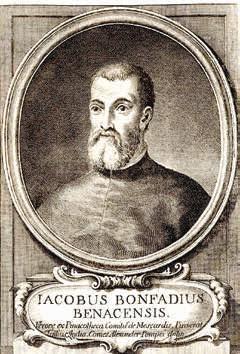
He produced the first systematic study of probability, published solutions for cubic and quadratic equations, made the first methodical use of negative numbers in algebra, and introduced binomial coefficients and binomial theorem to Europe.
Immensely influential during his lifetime, some scholars credit him with perfecting the combination lock and the Cardan shaft with universal joints, still used in vehicles today. In addition, as an educator, he was the first to argue that deaf people could learn to read and write without knowing how to speak first. Like the achievements of Bonfàdio, Phinot, and Gombert, Cardano’s work remains deeply woven into the fabric of our time and place, whether we remember his name or not.
Bill Lipsky, Ph.D., author of “LGBTQ+ Trailblazers of San Francisco” (2023) and “Gay and Lesbian San Francisco” (2006), is a member of the Rainbow Honor Walk board of directors.
